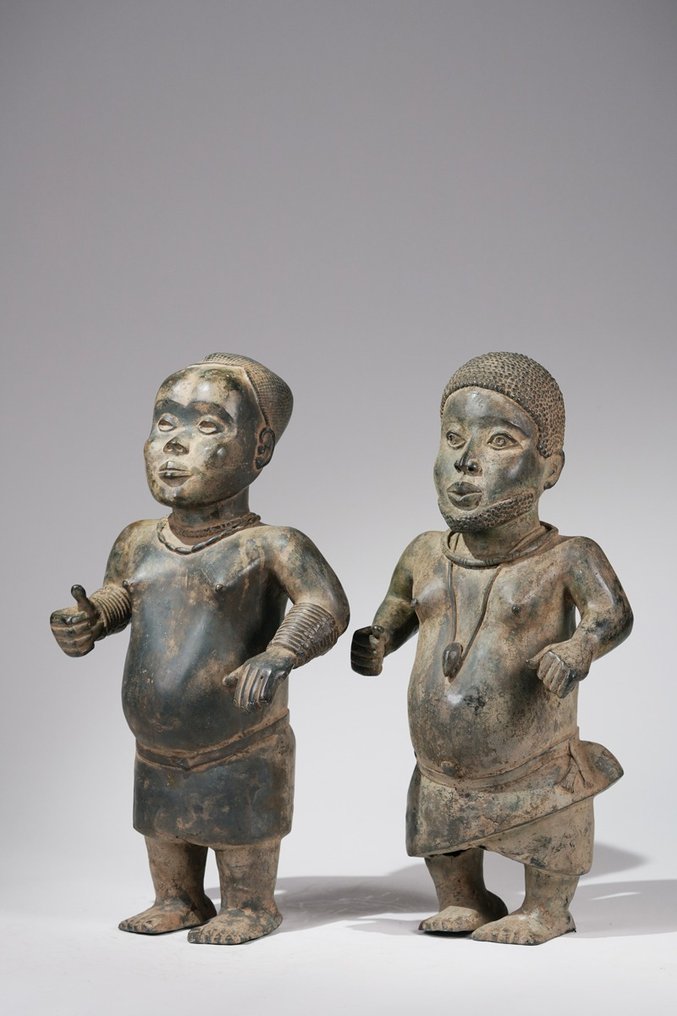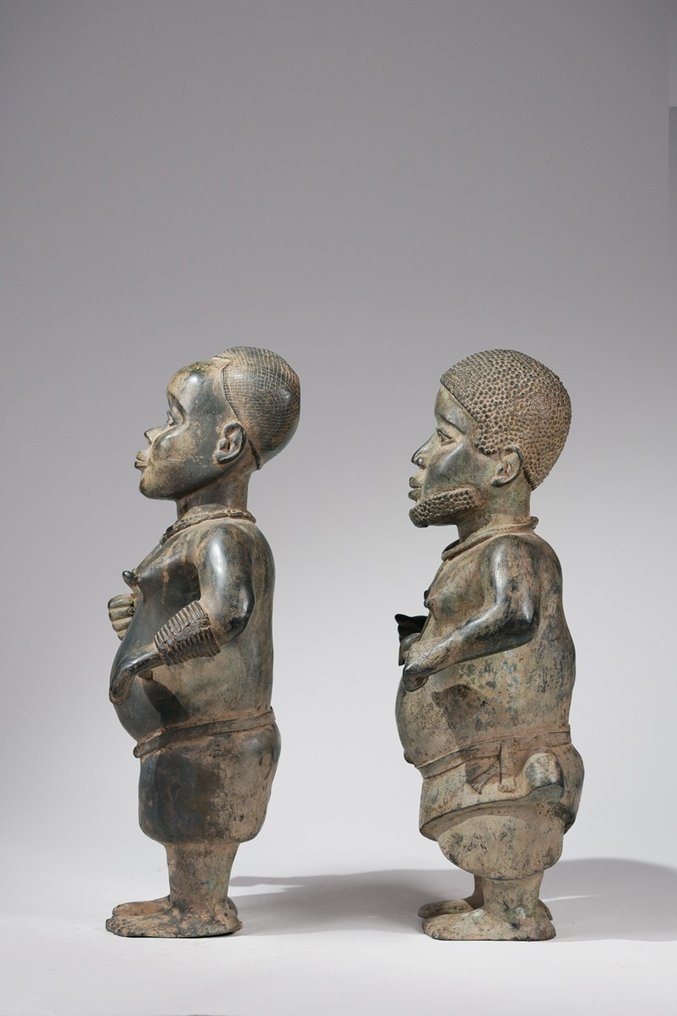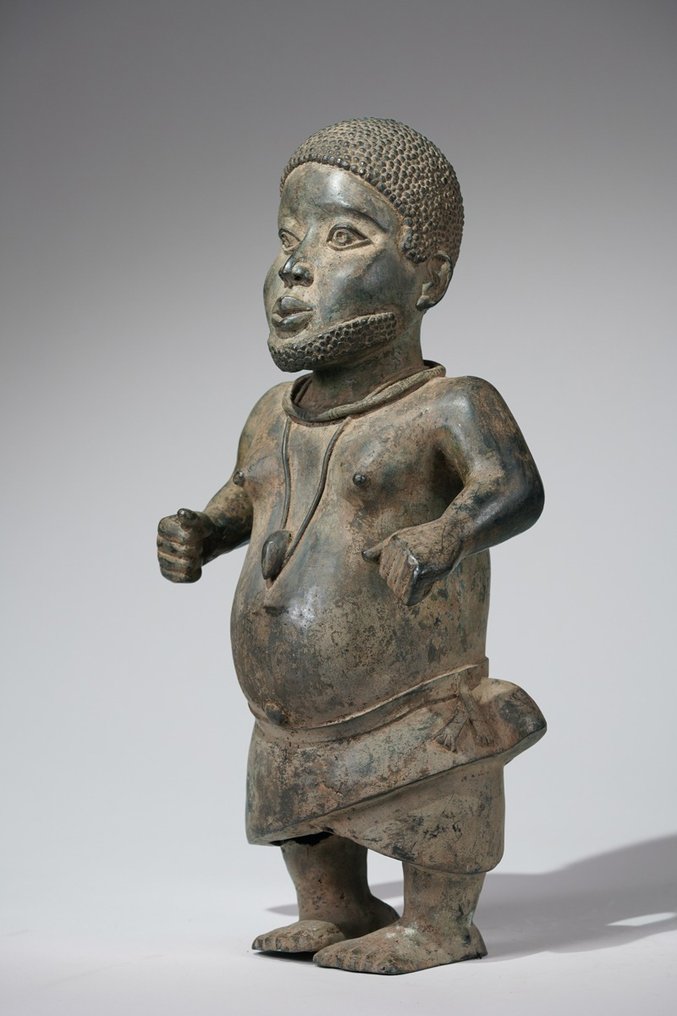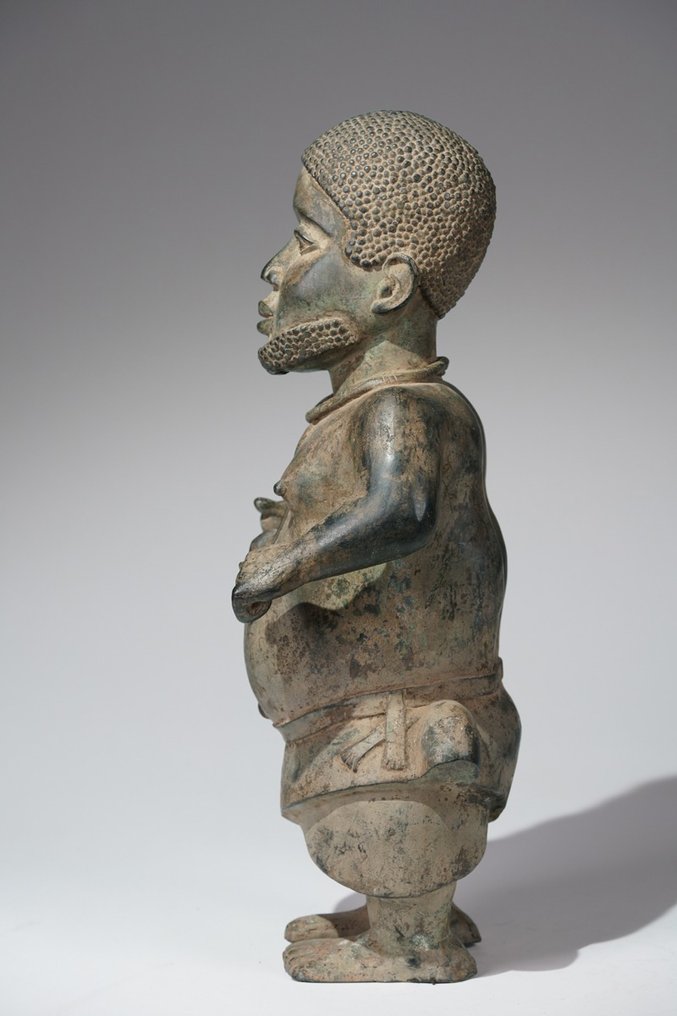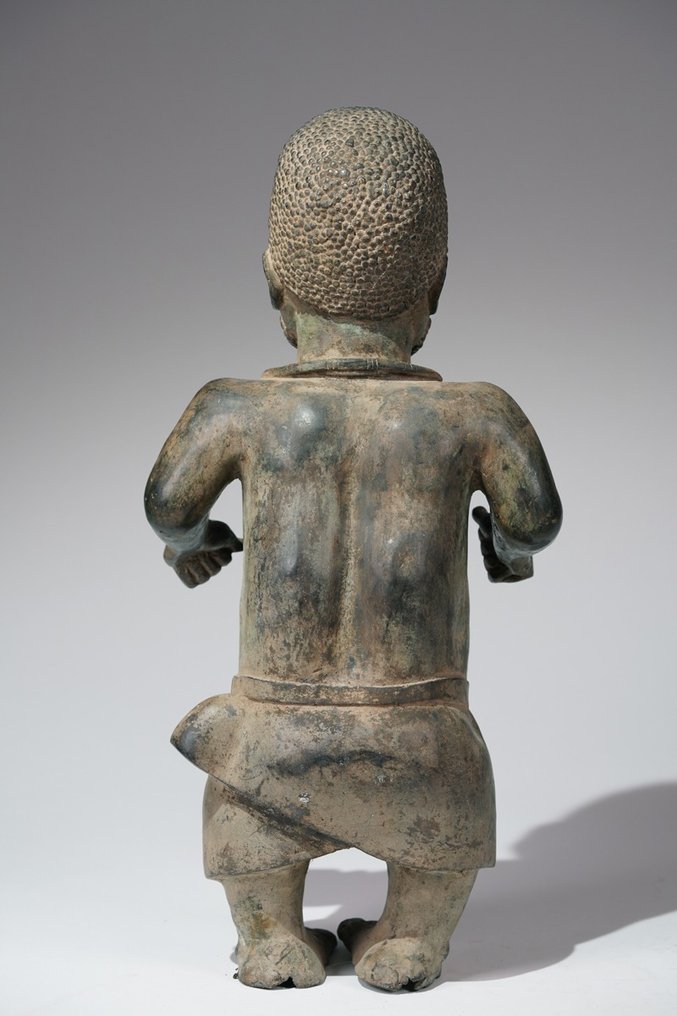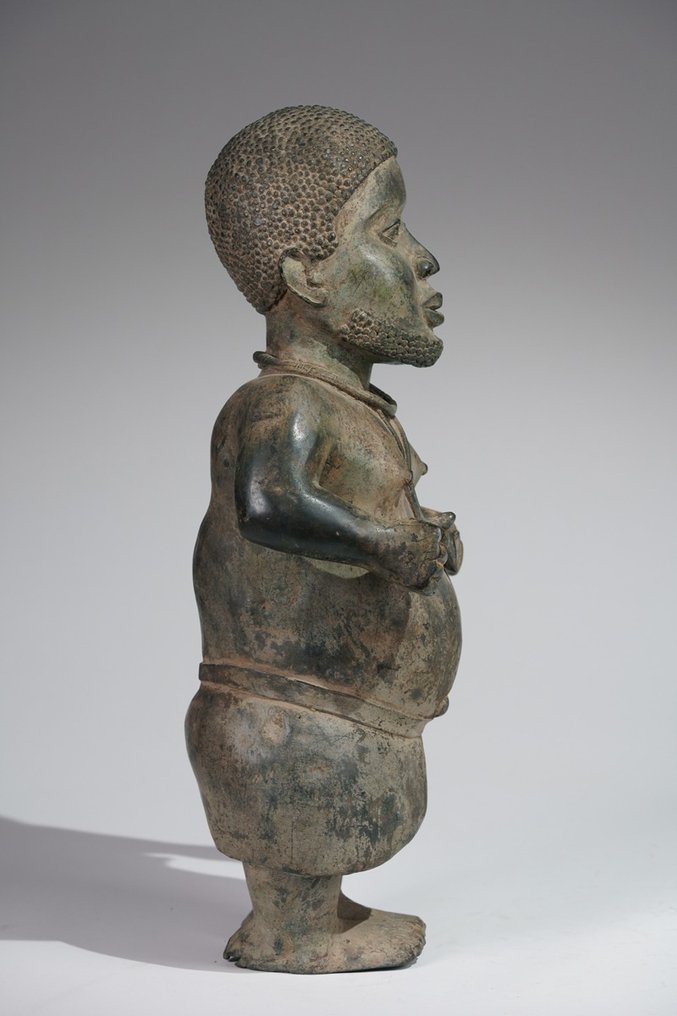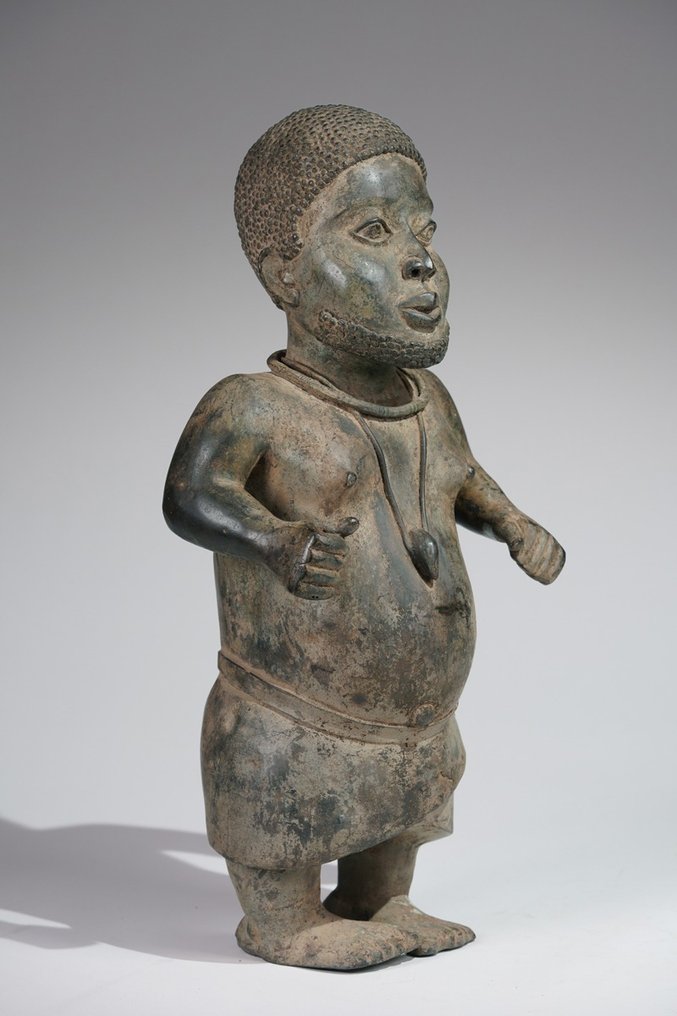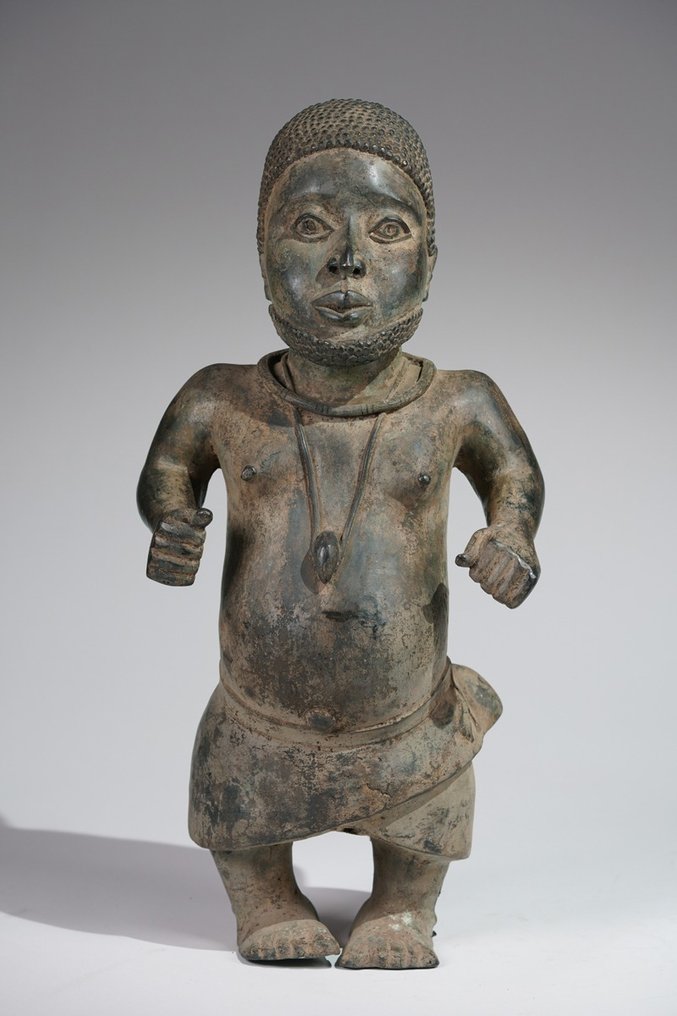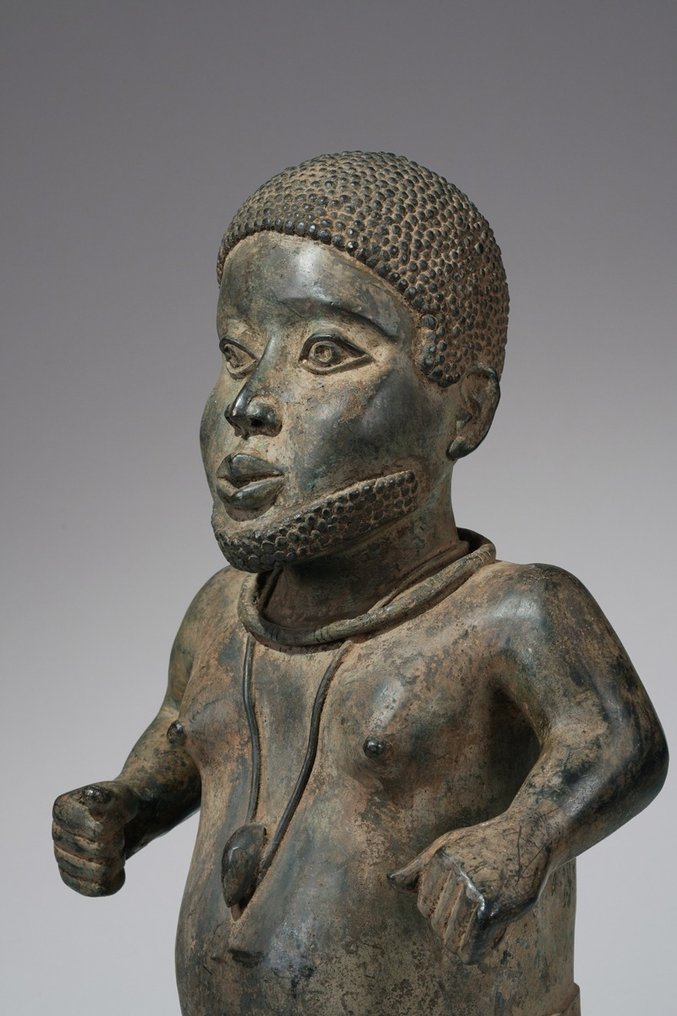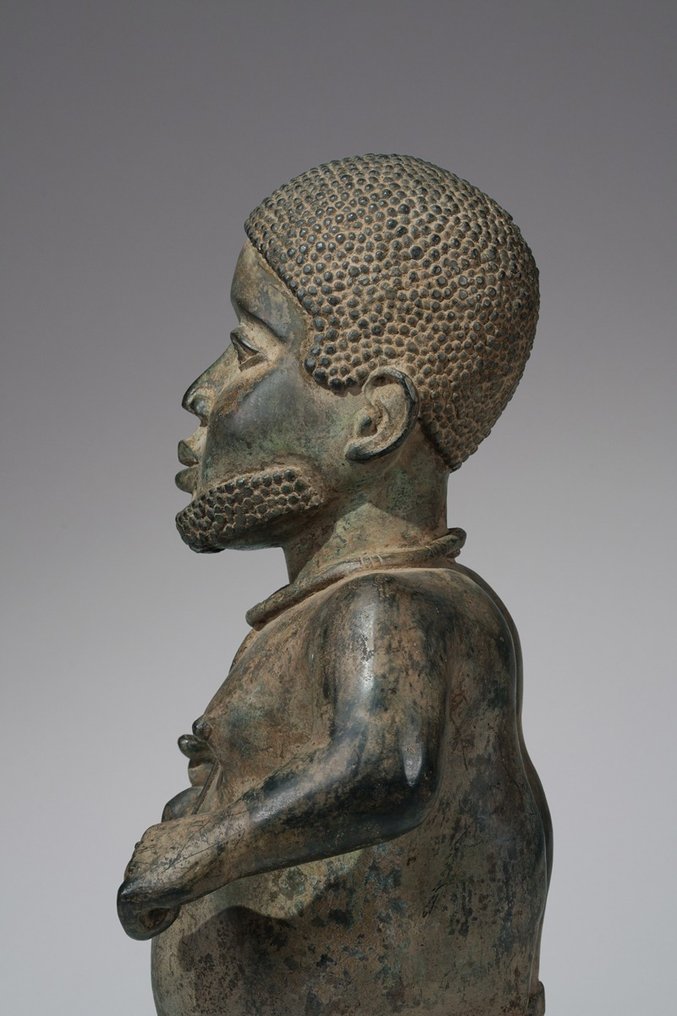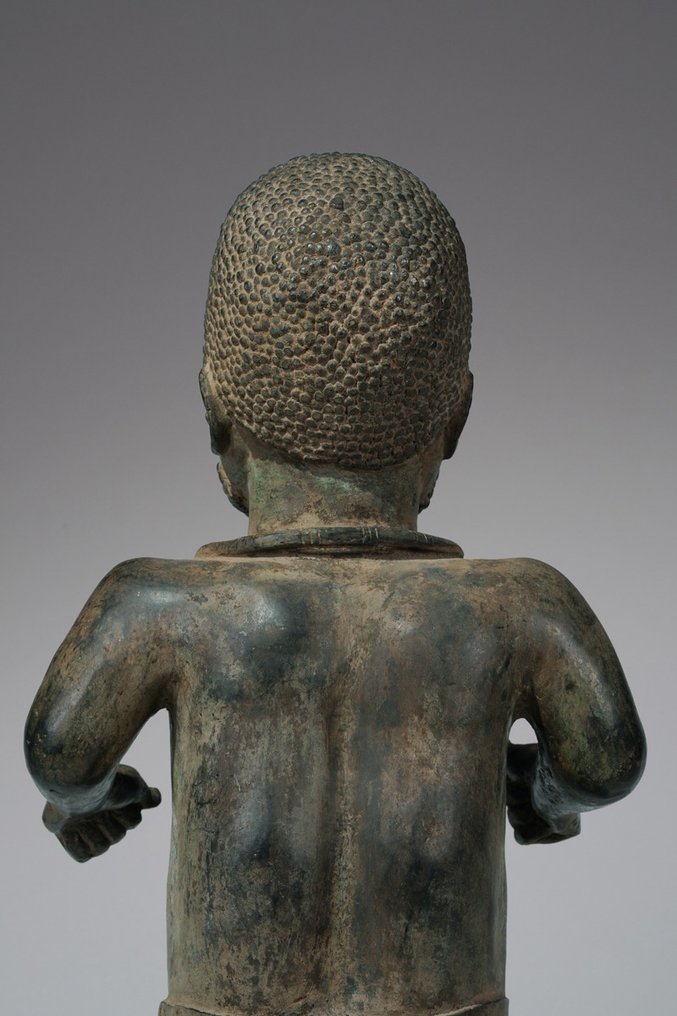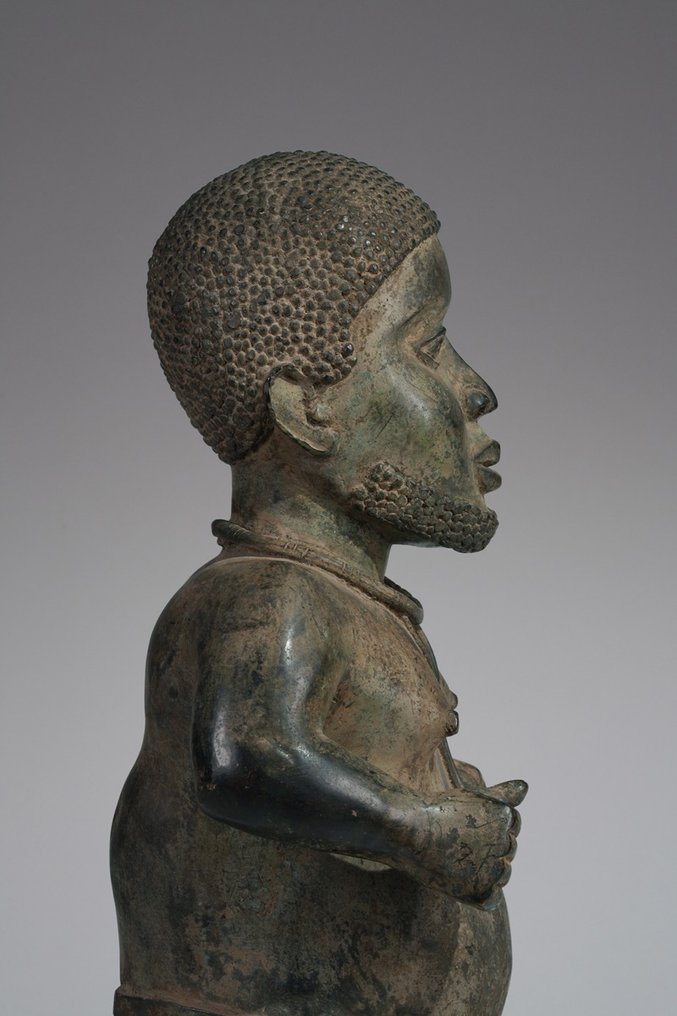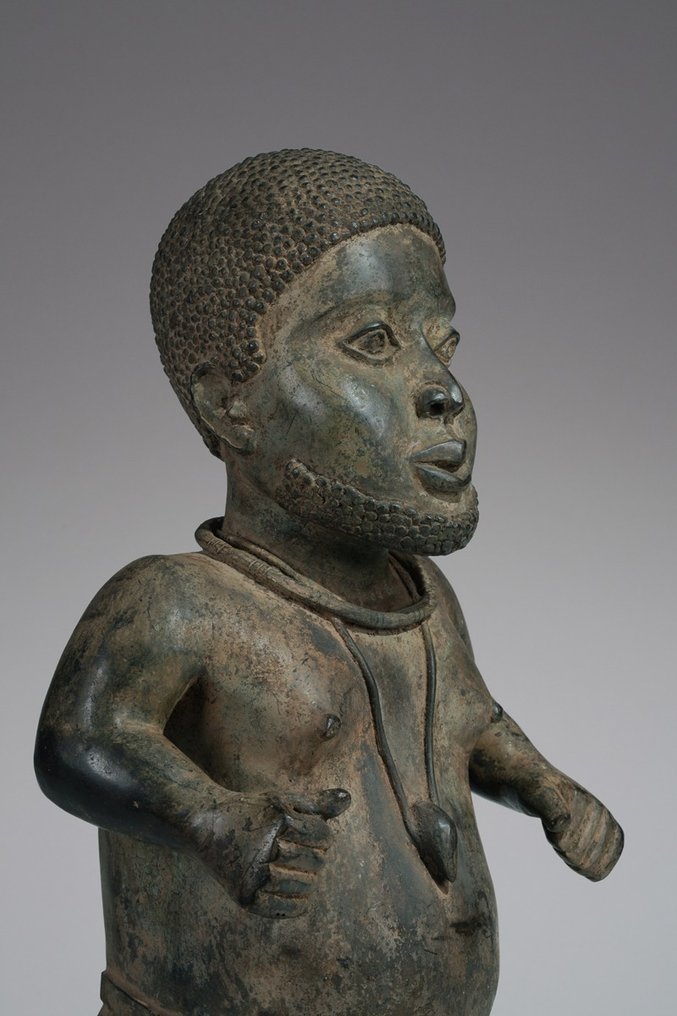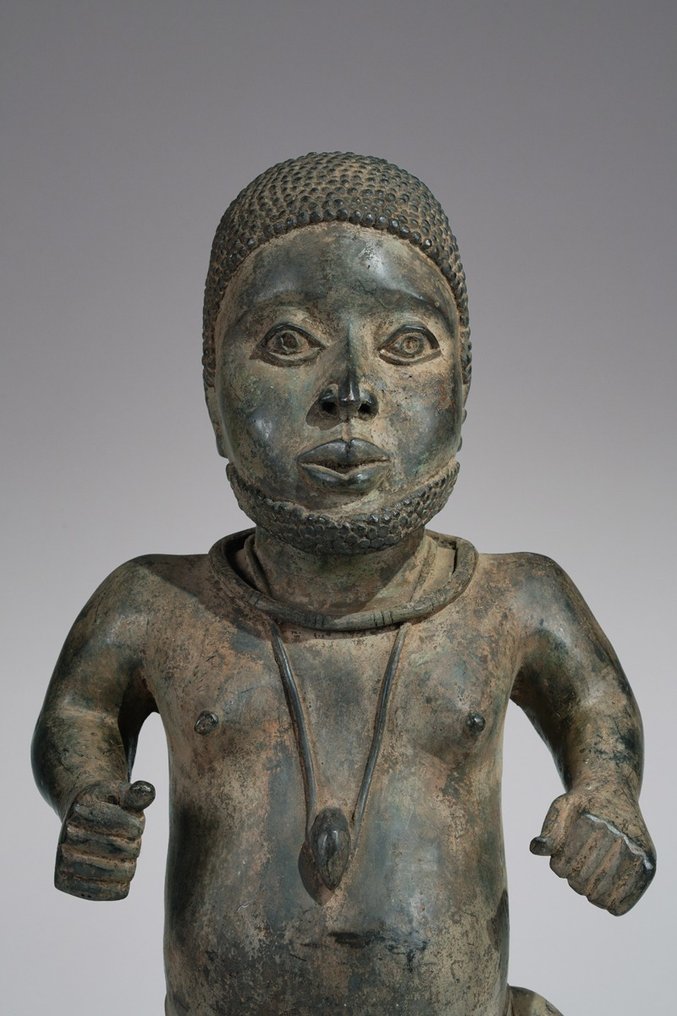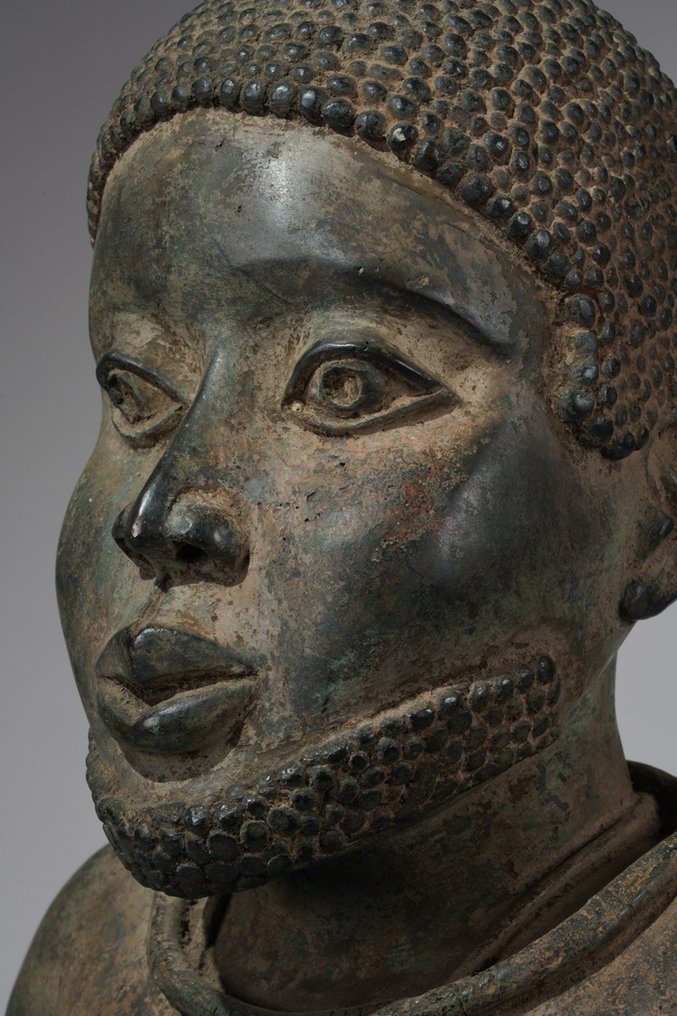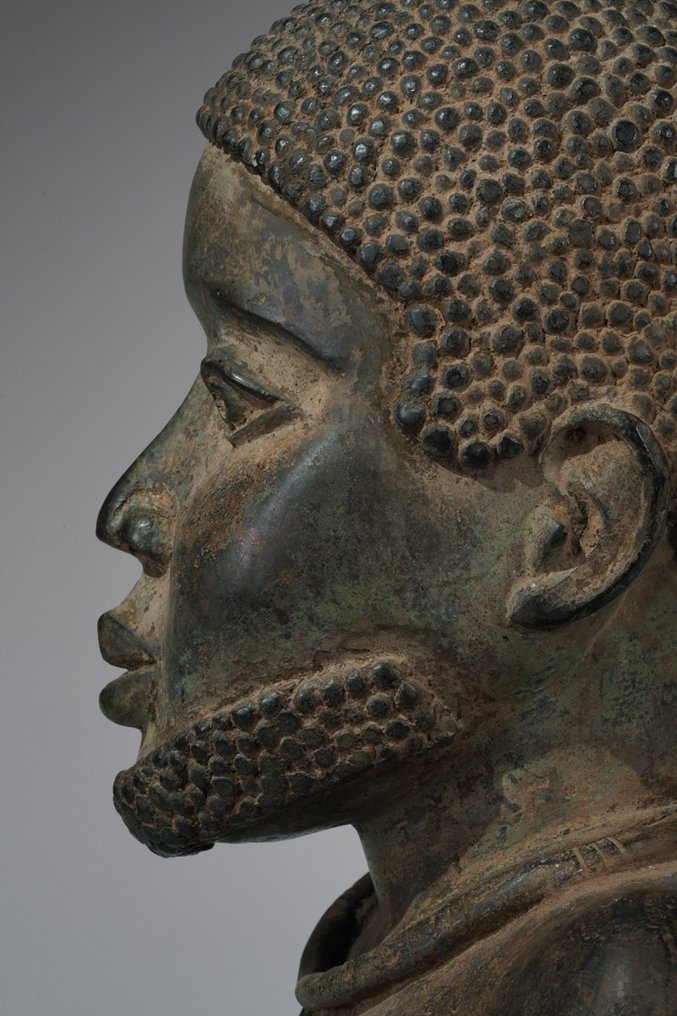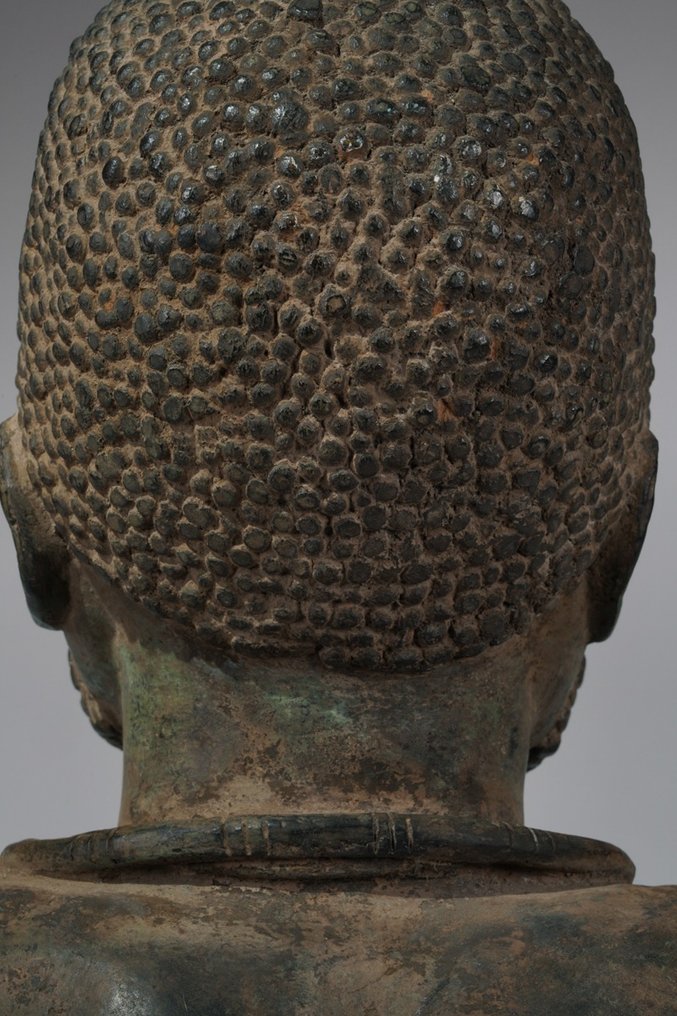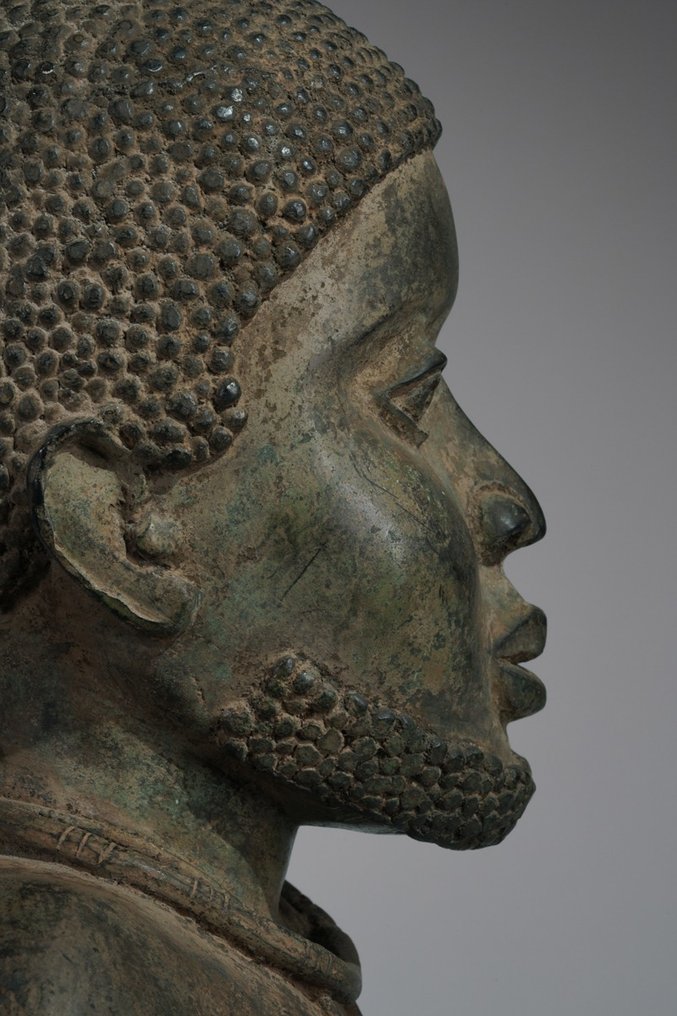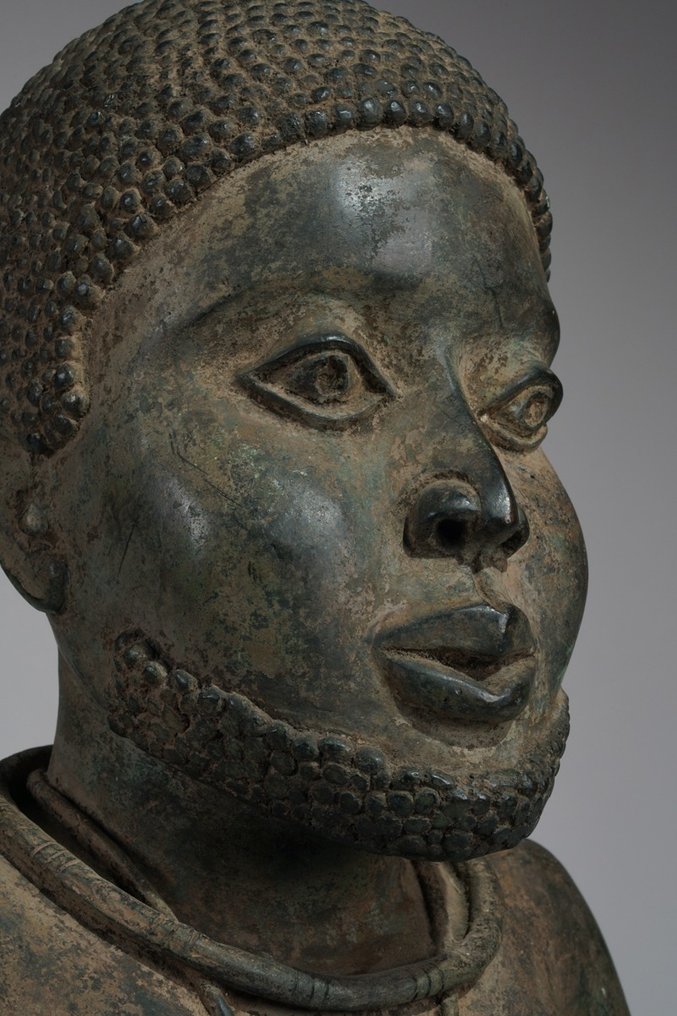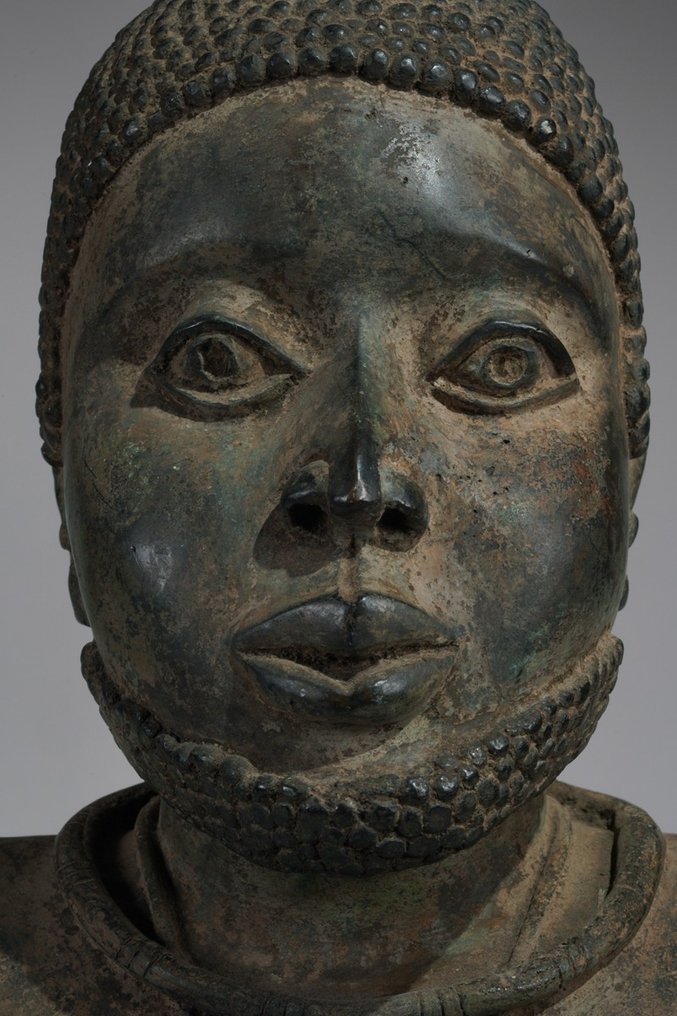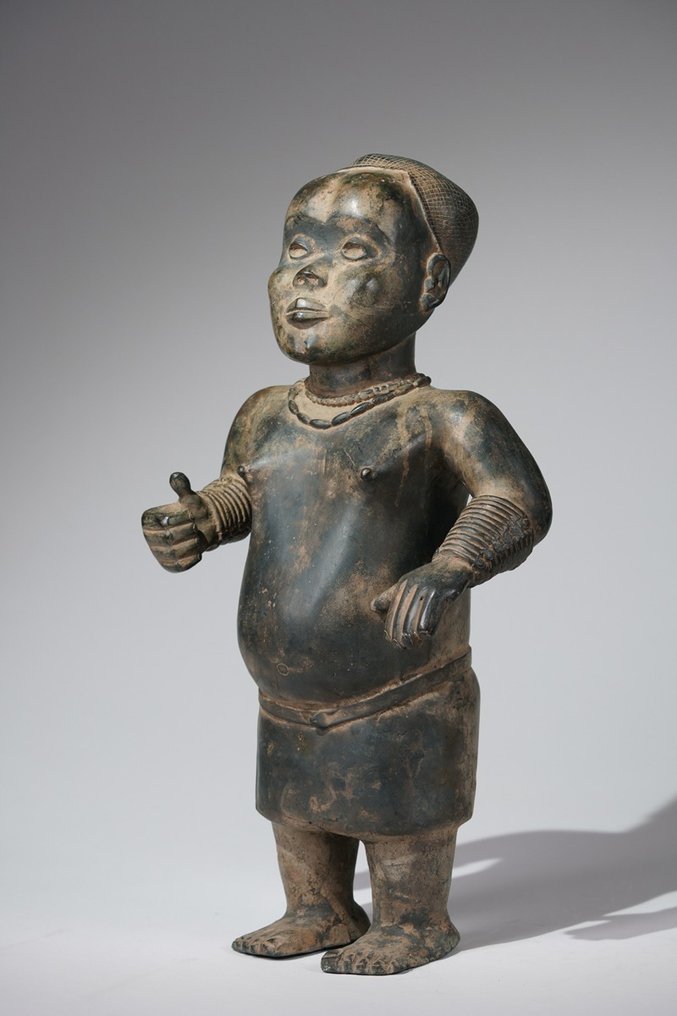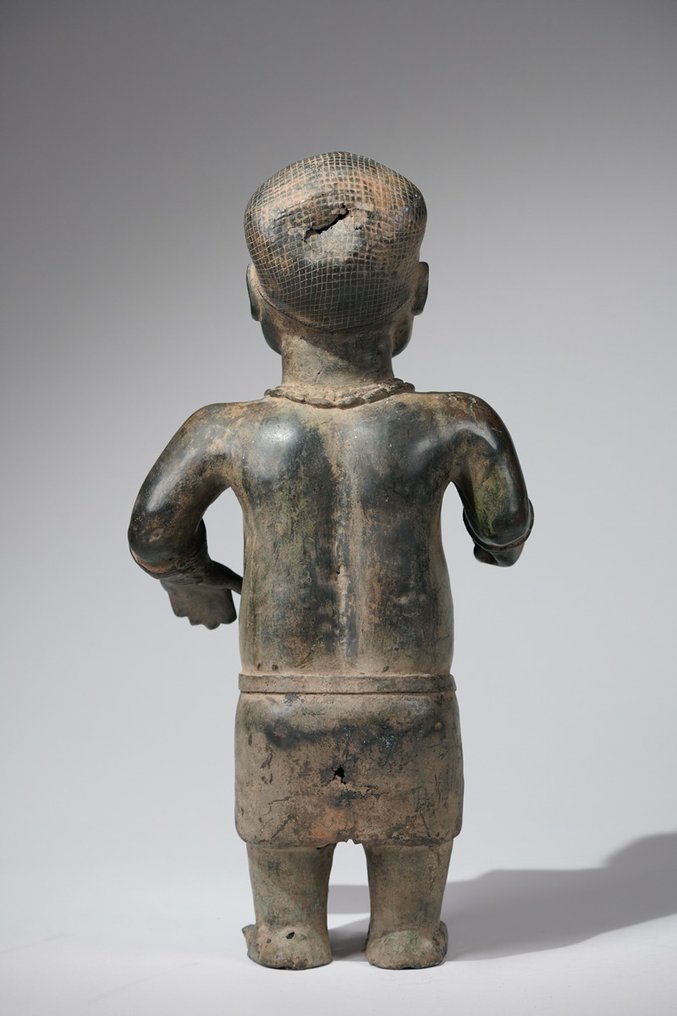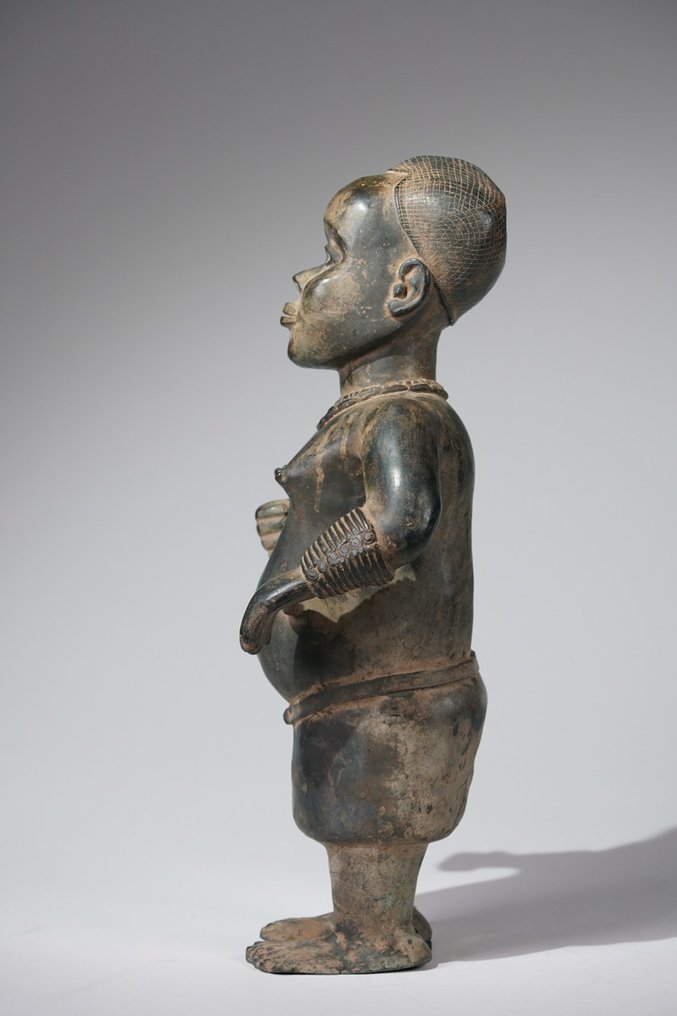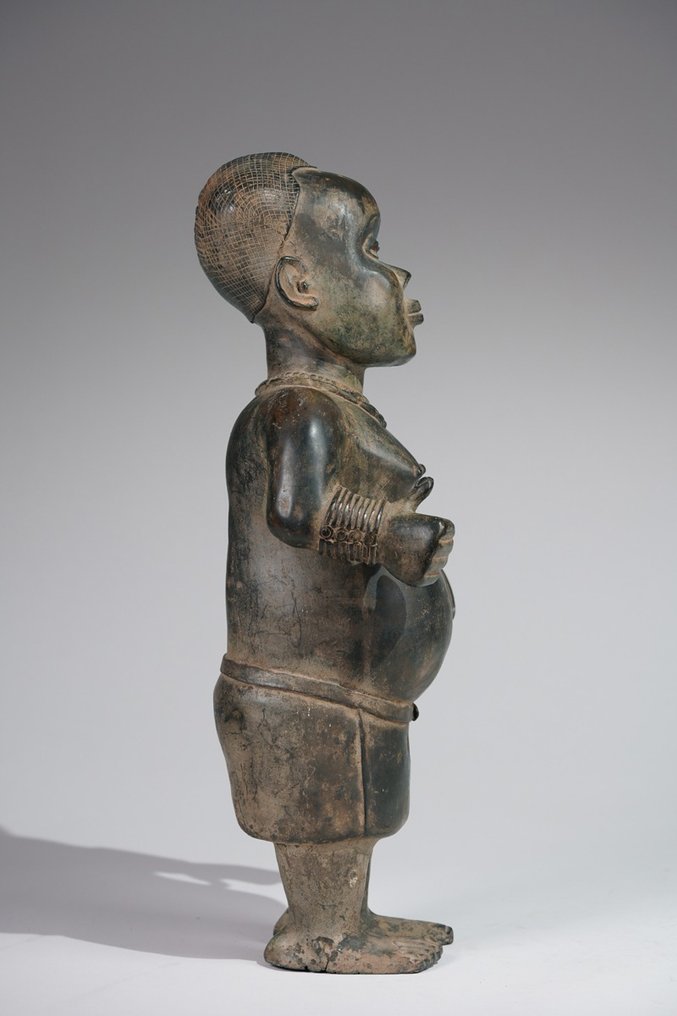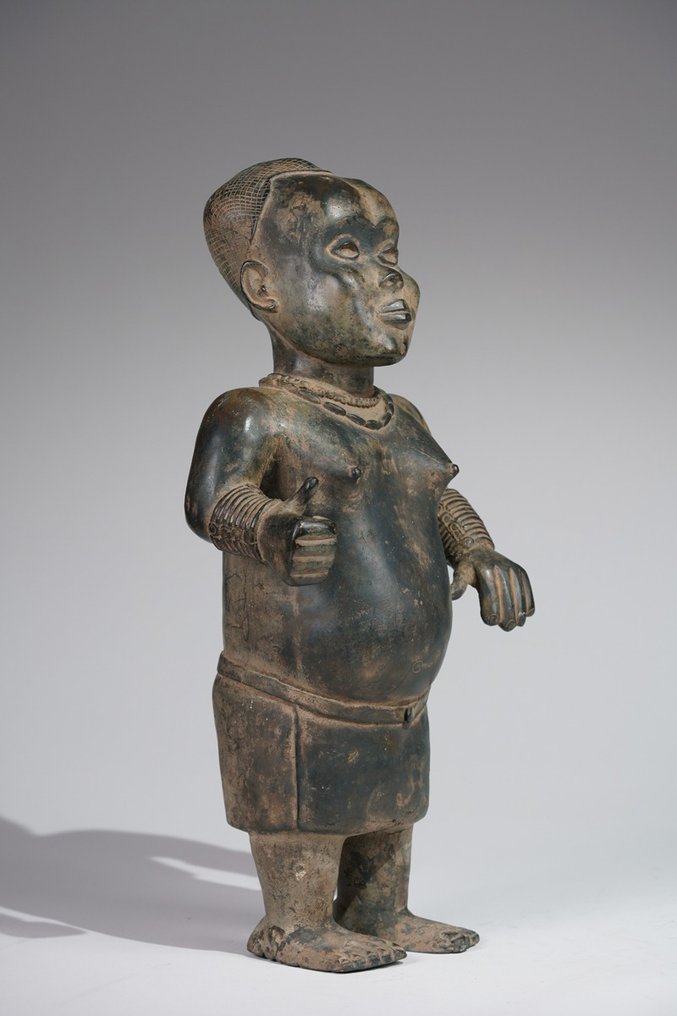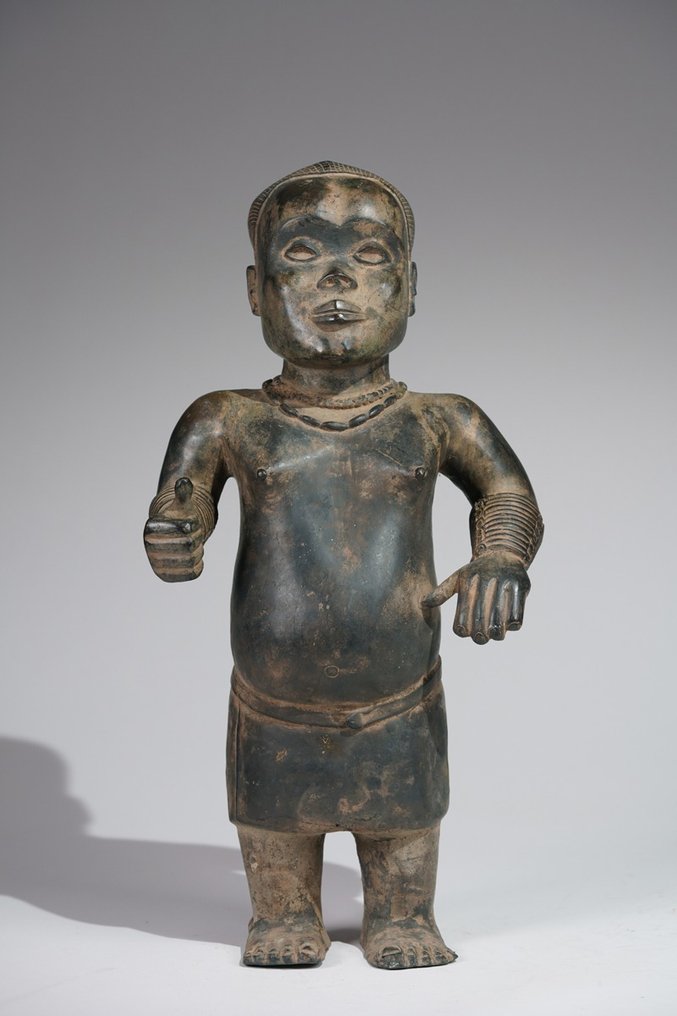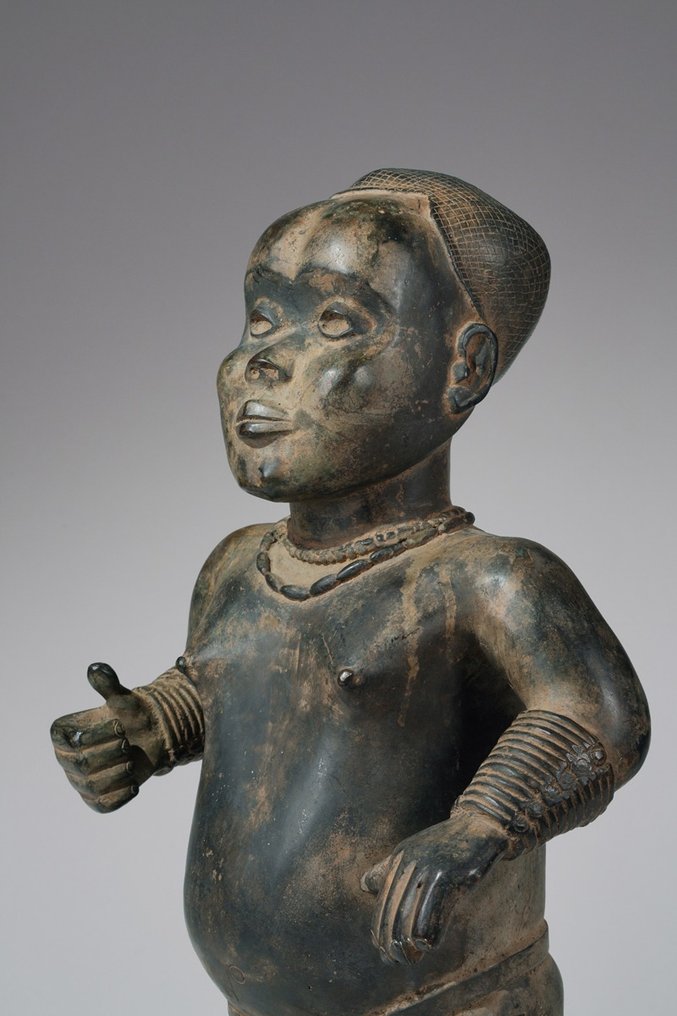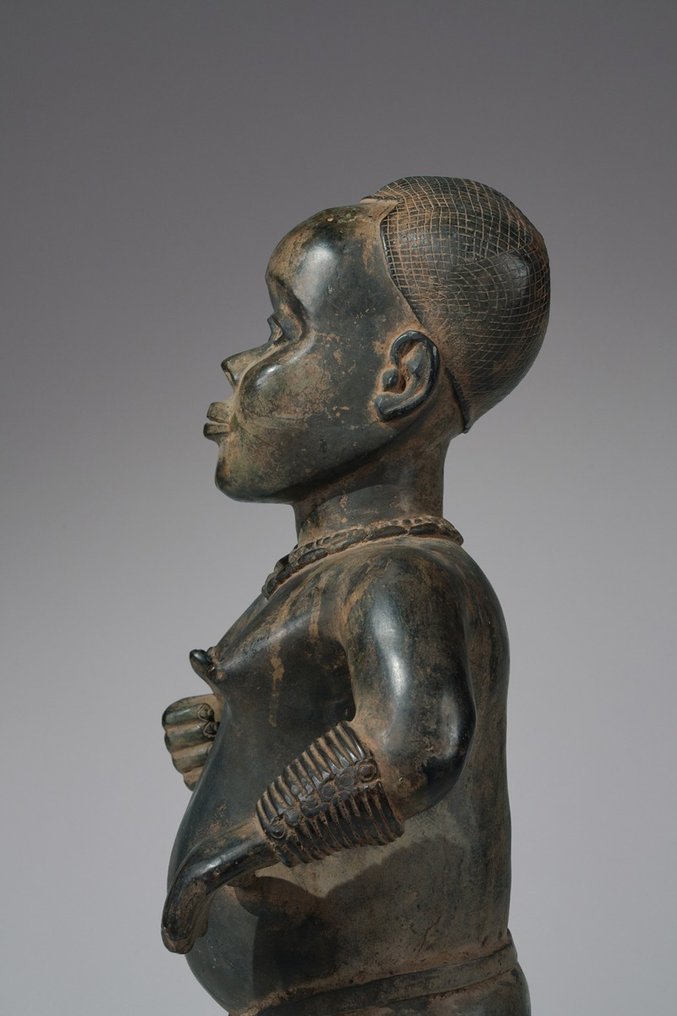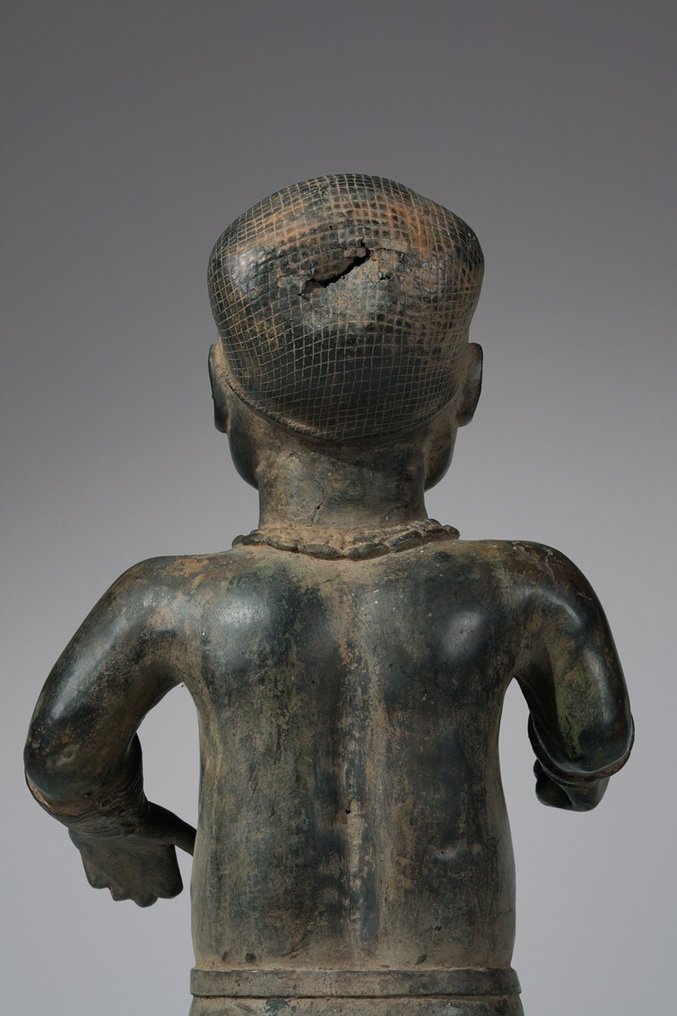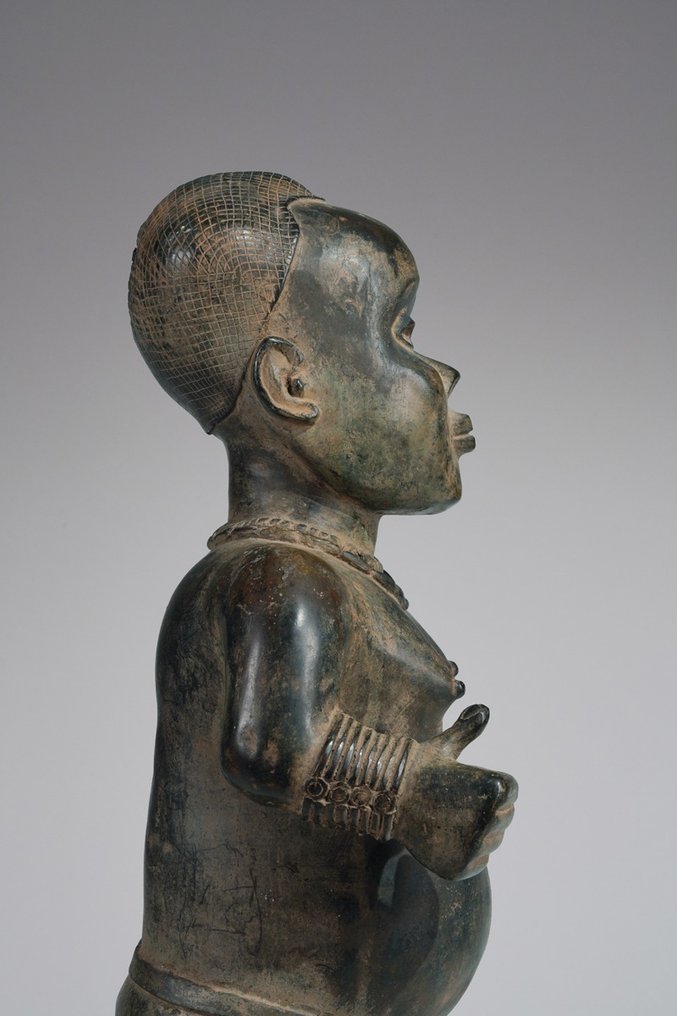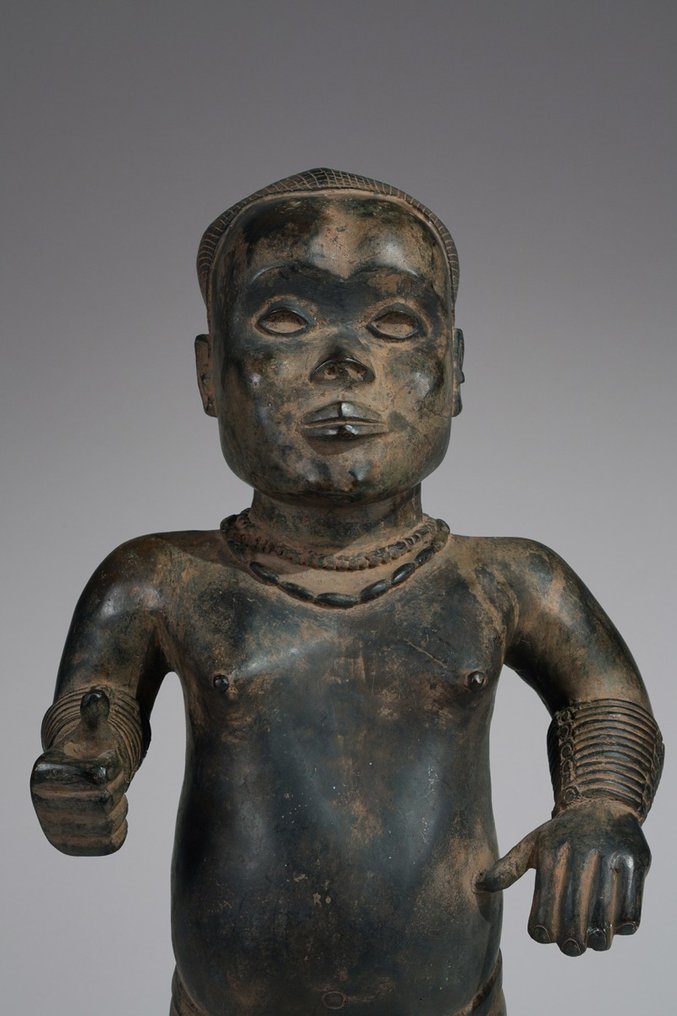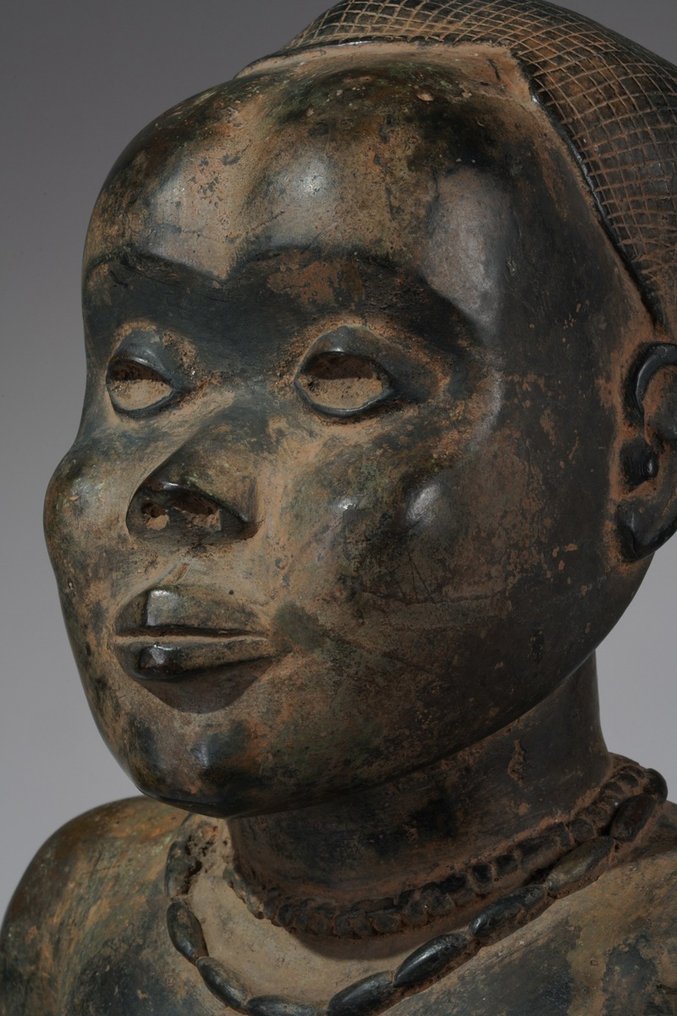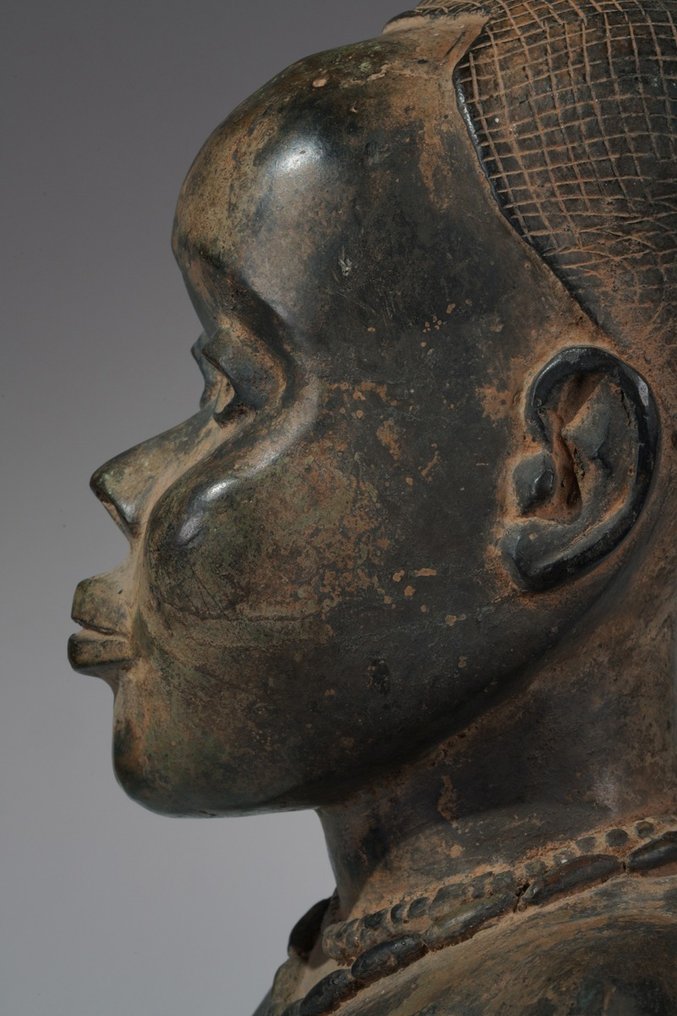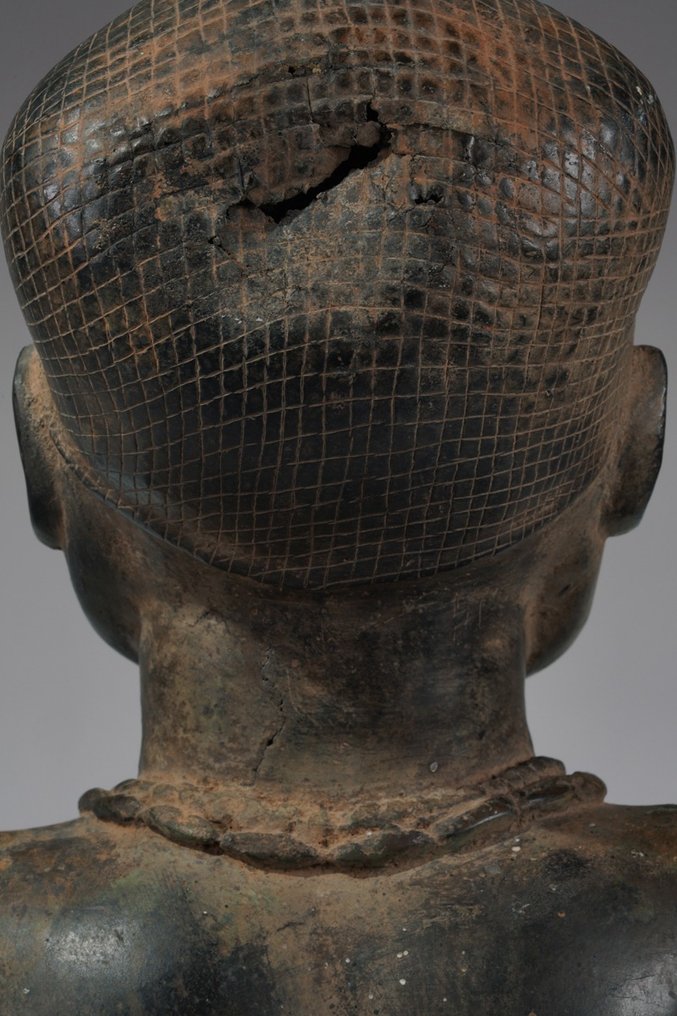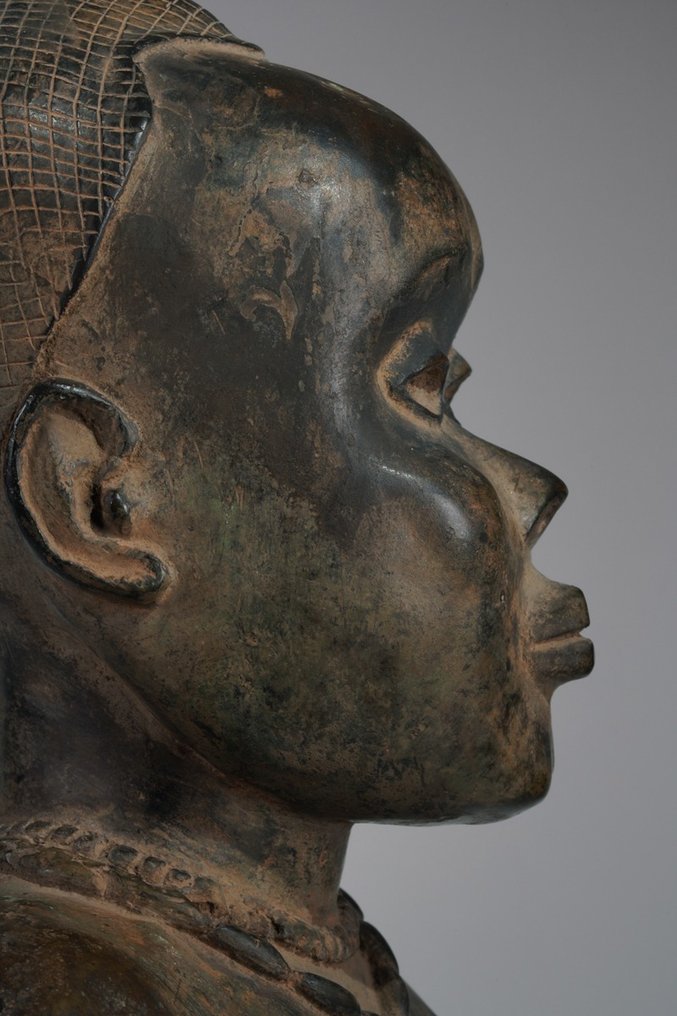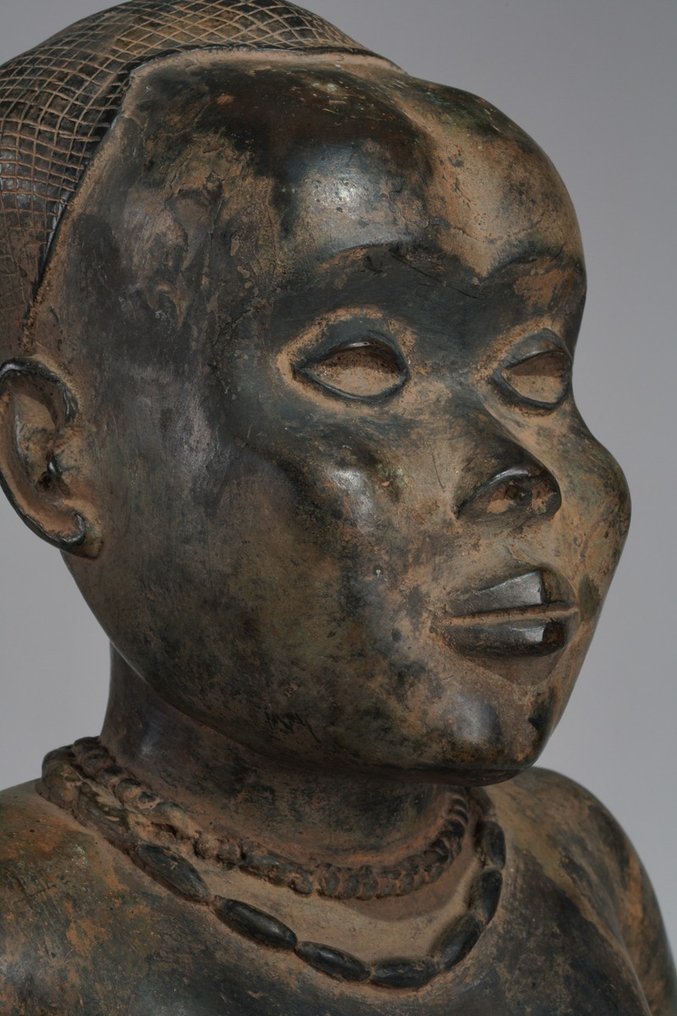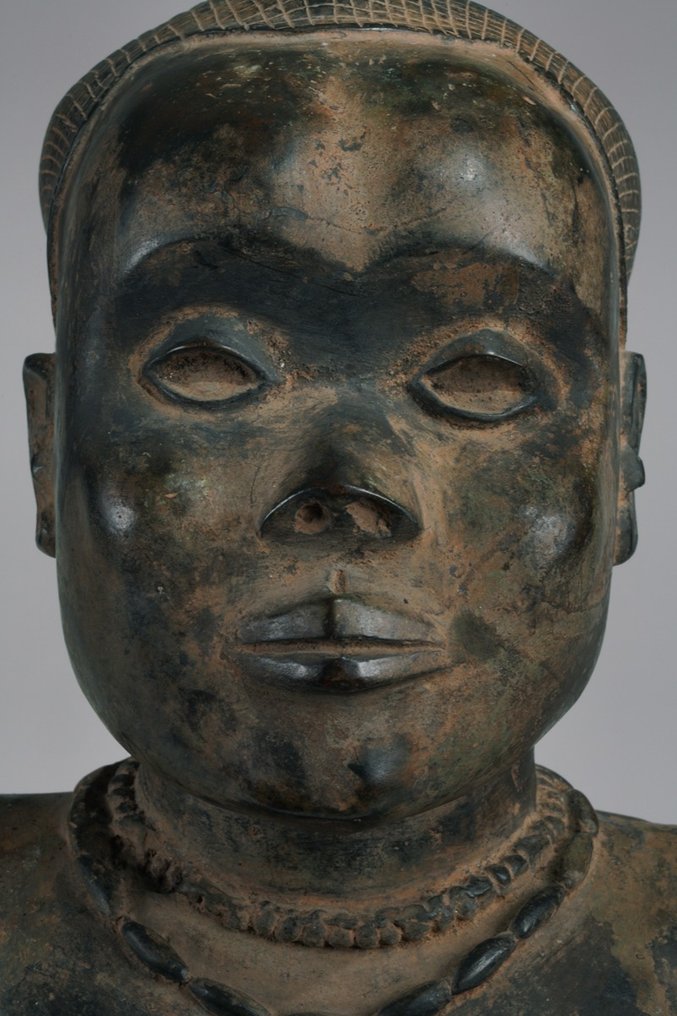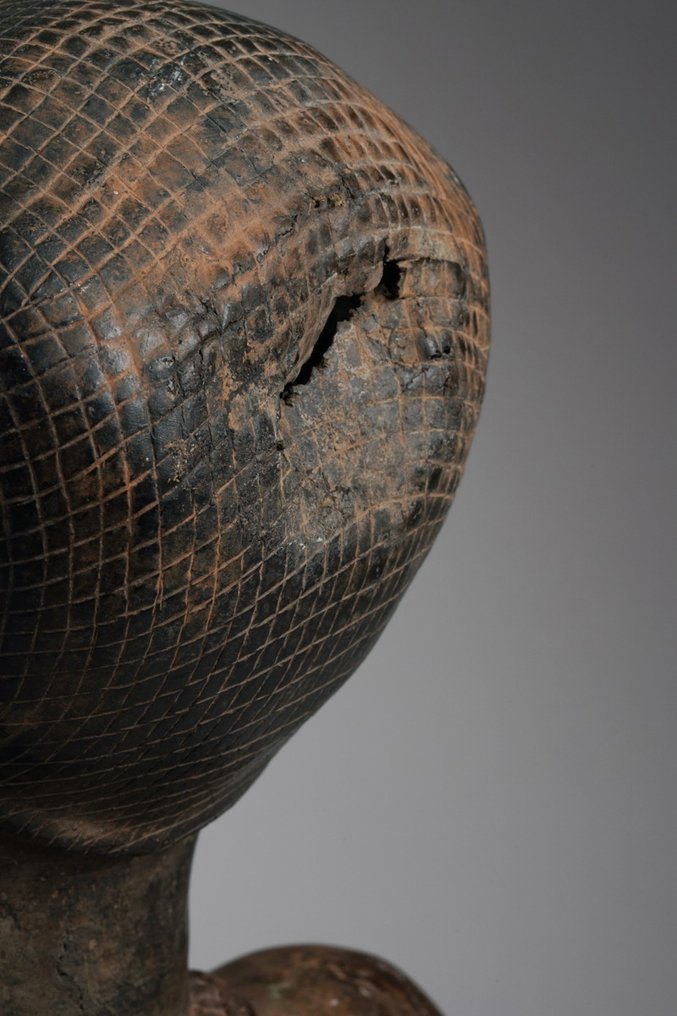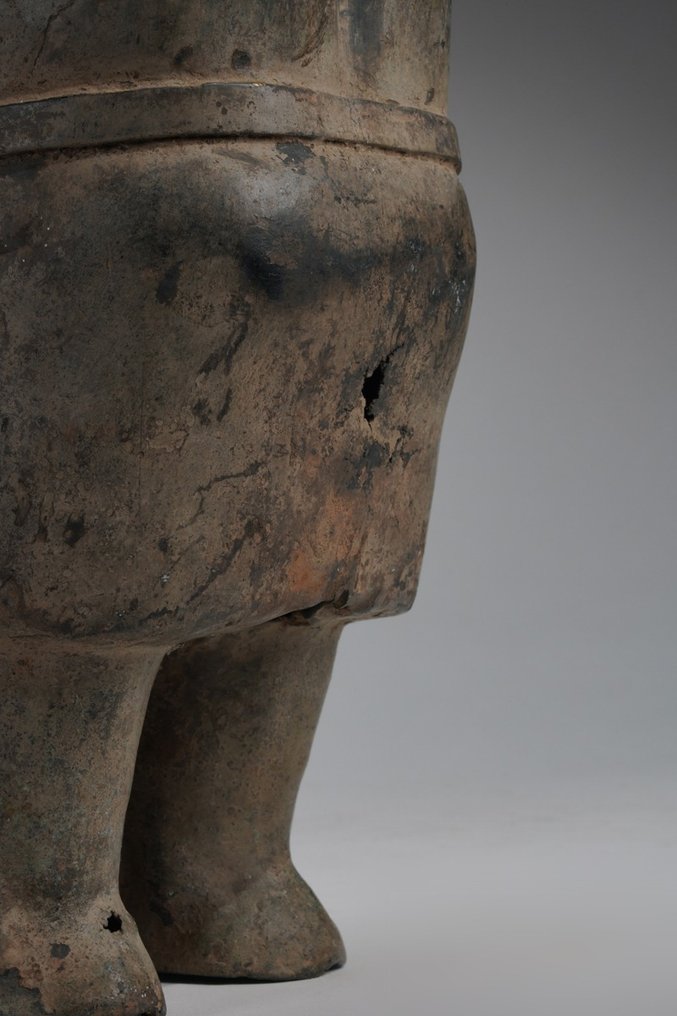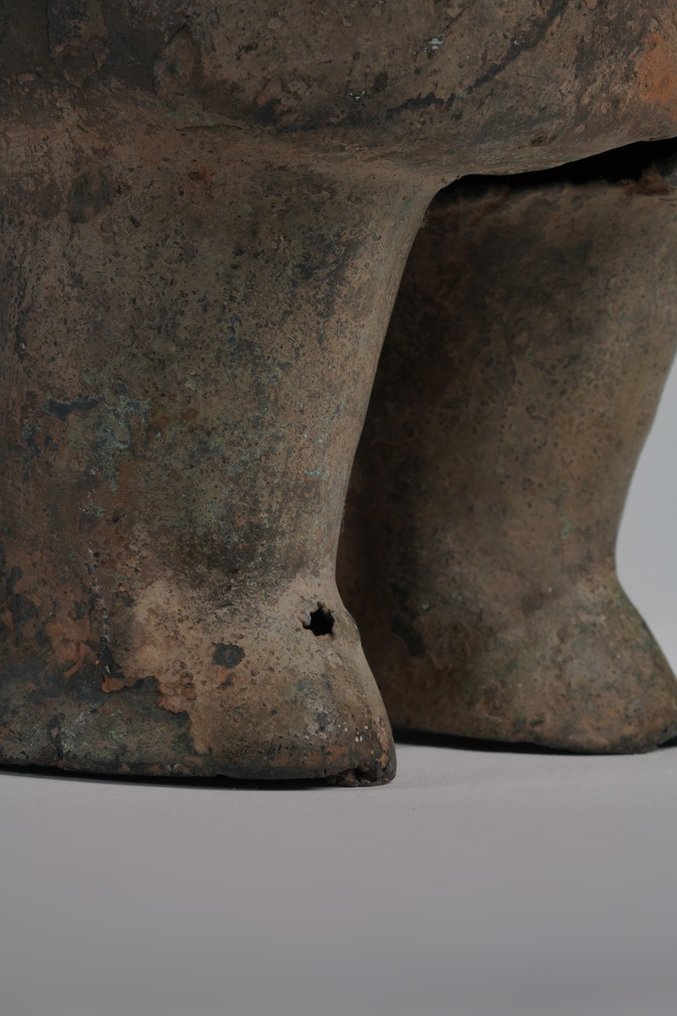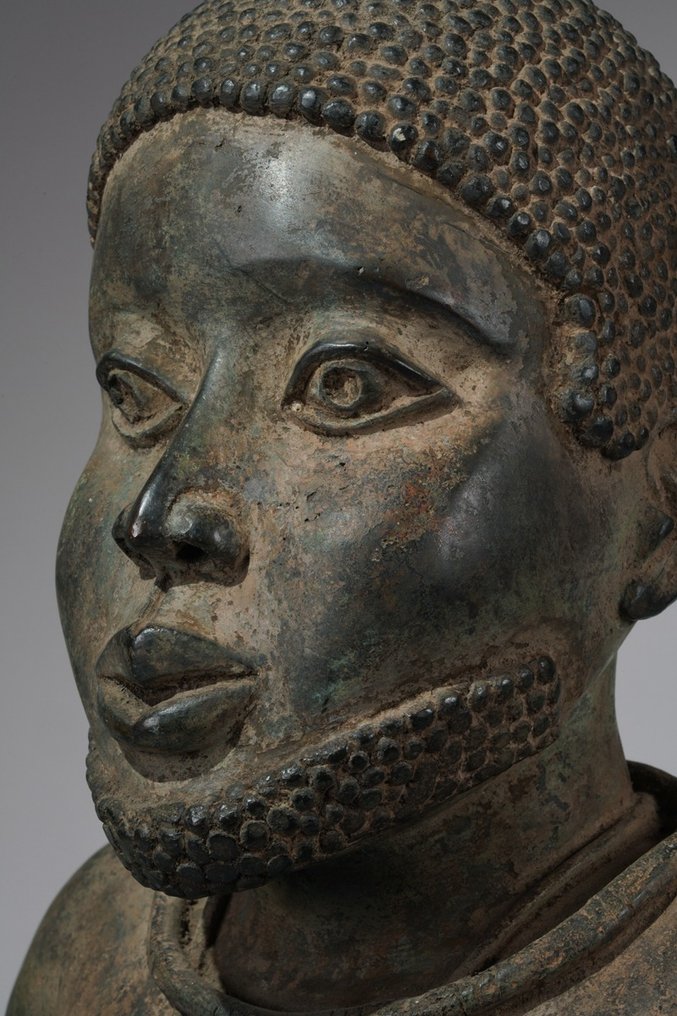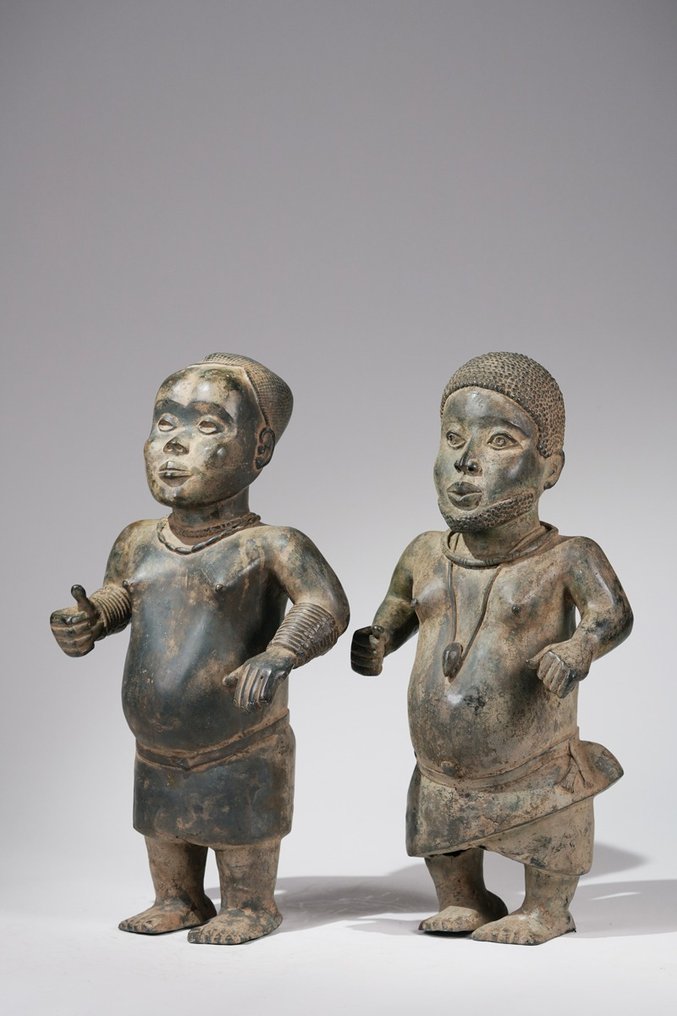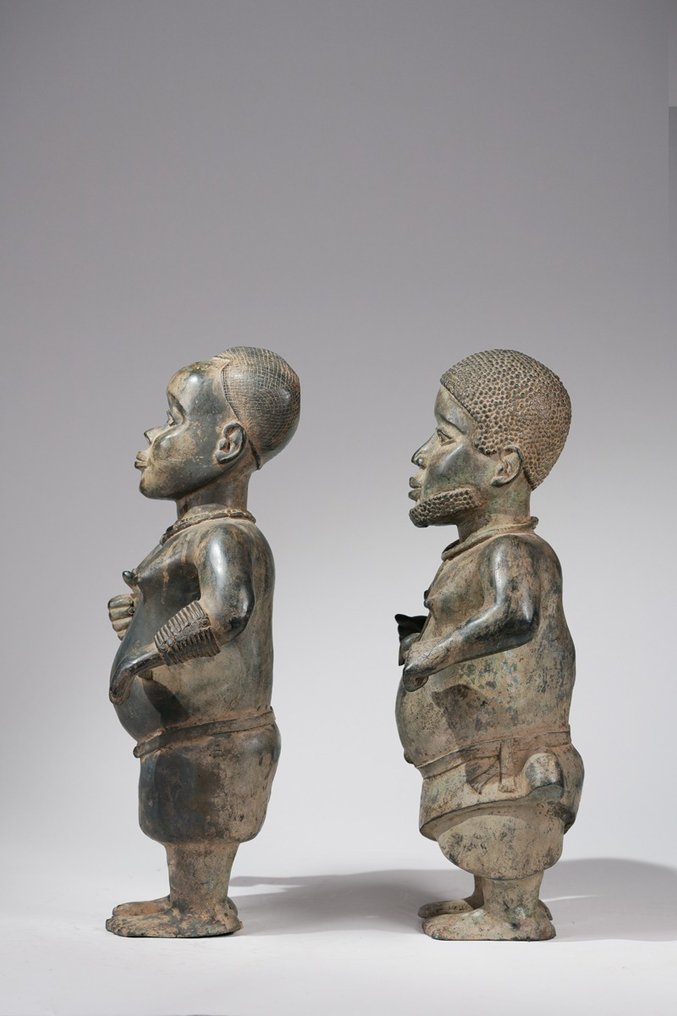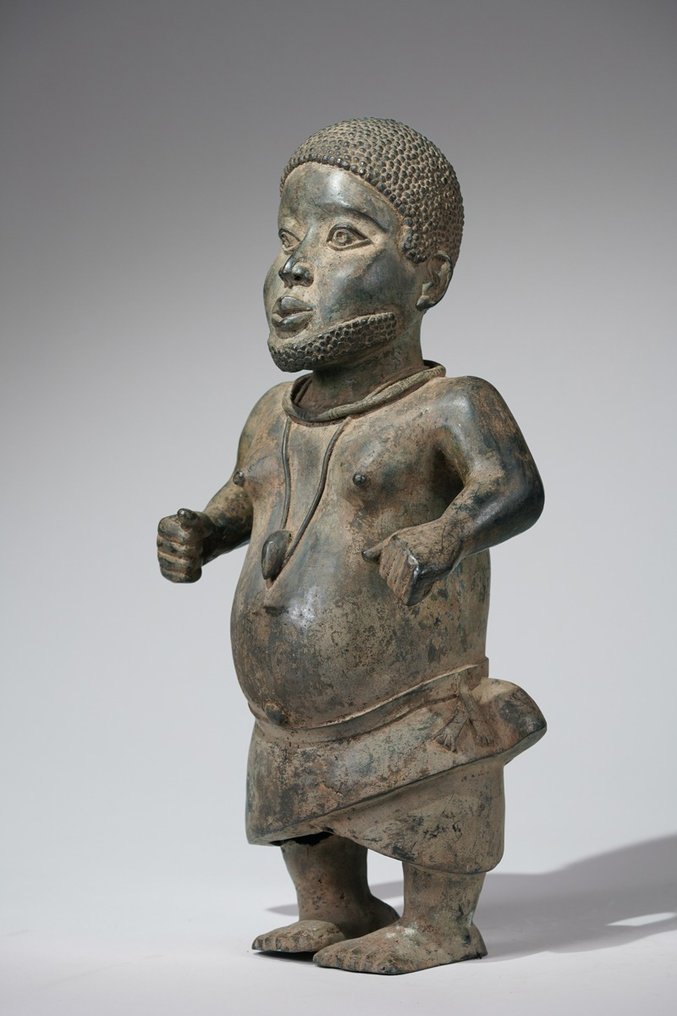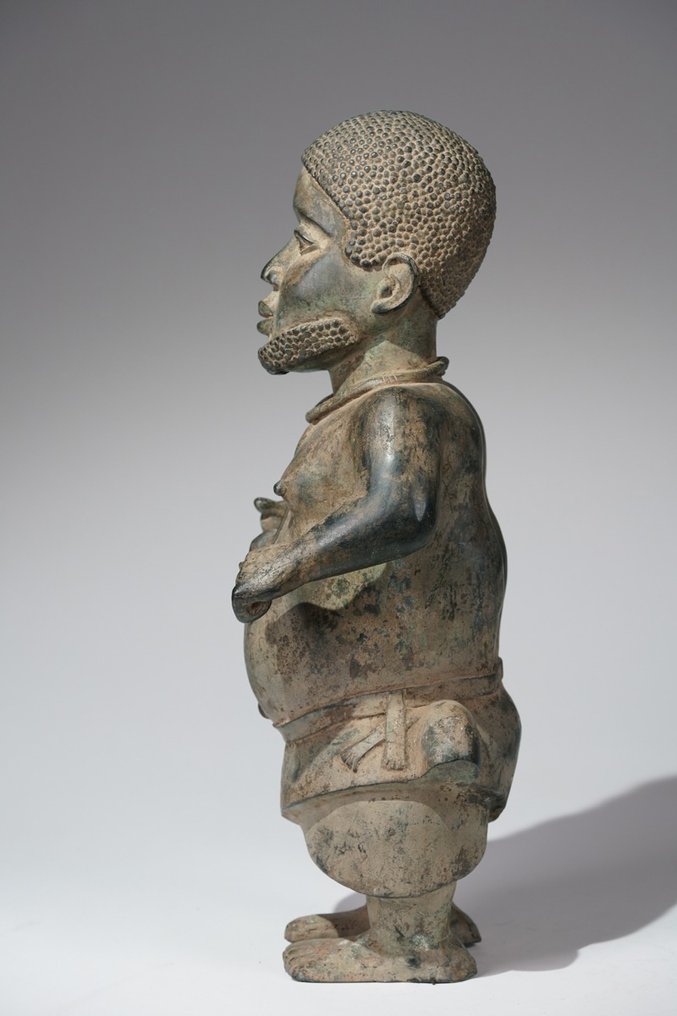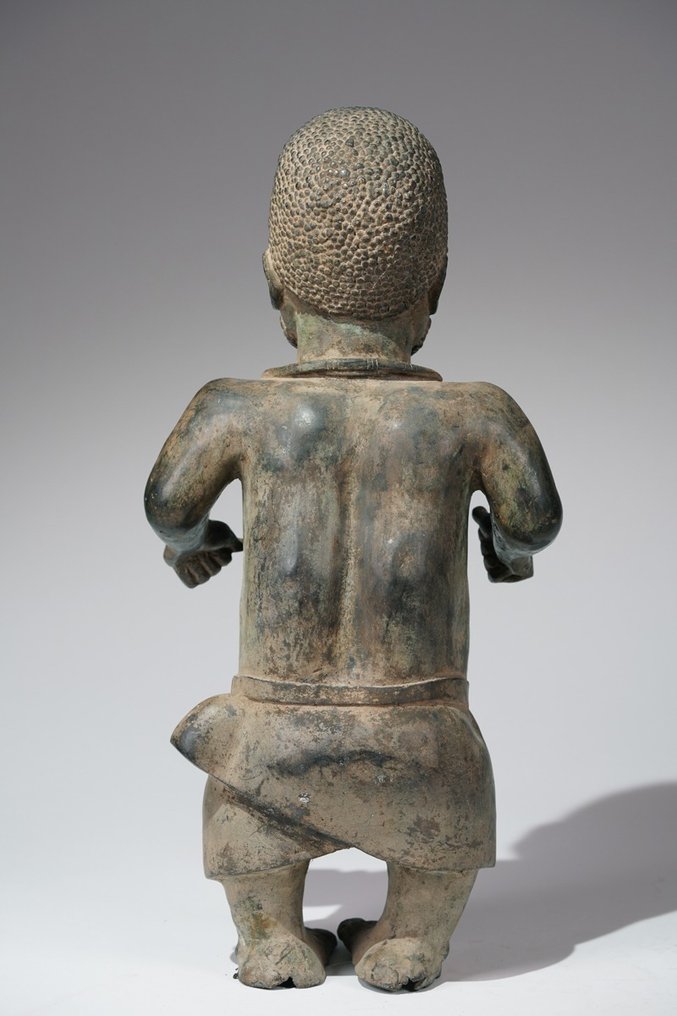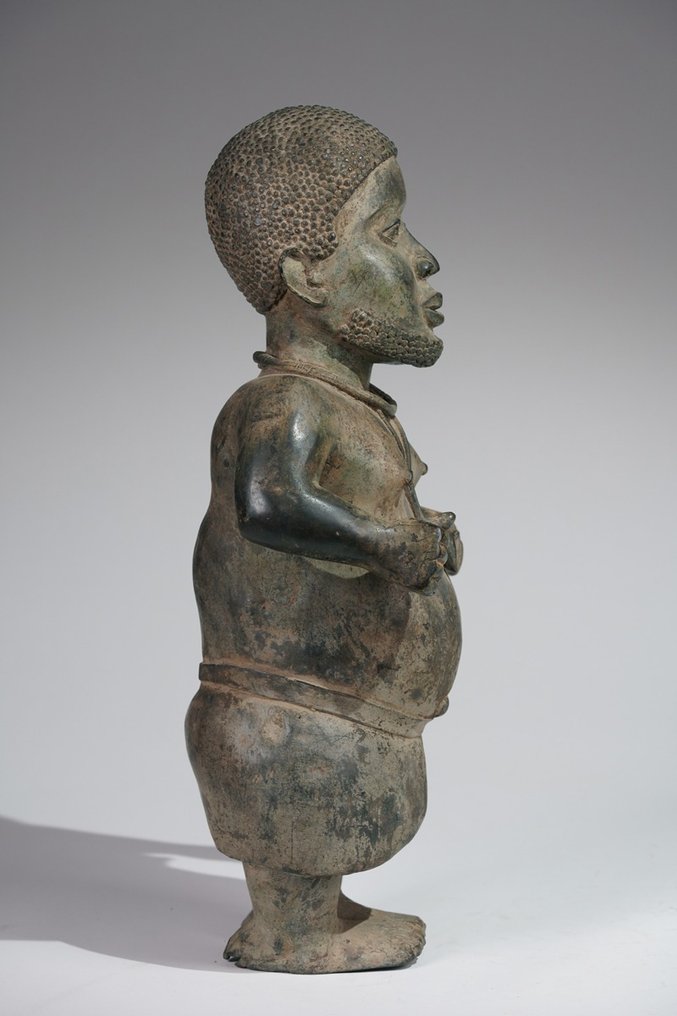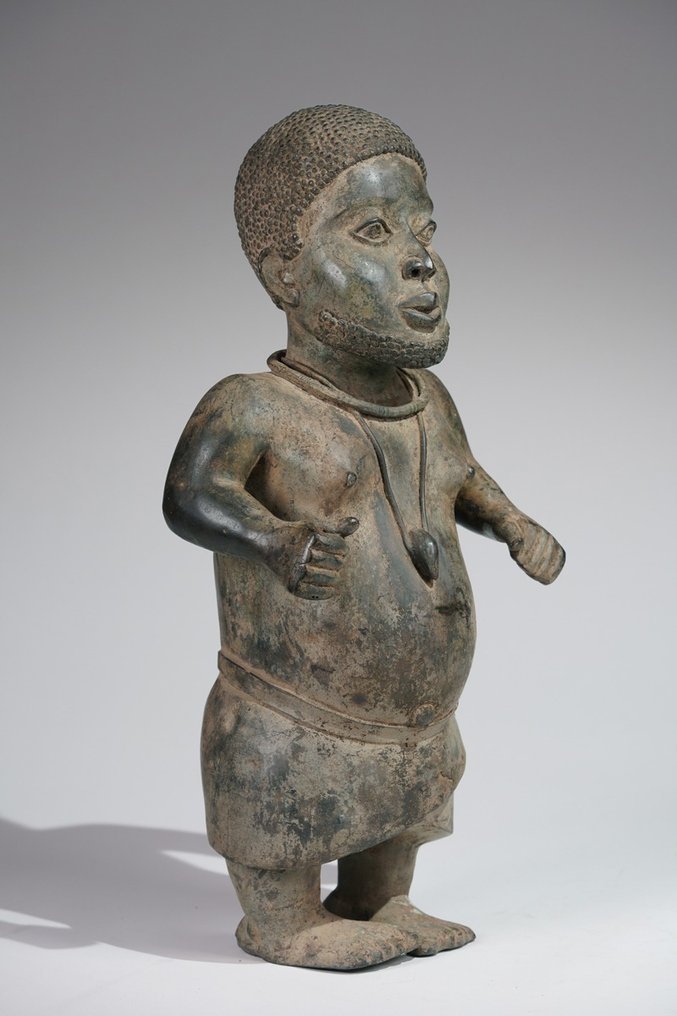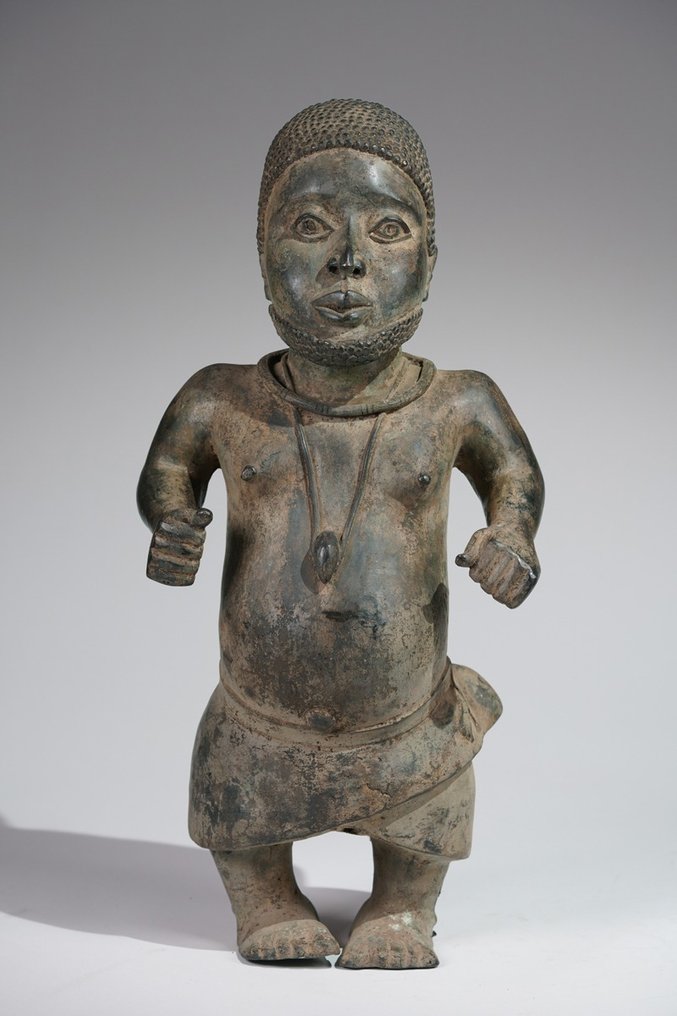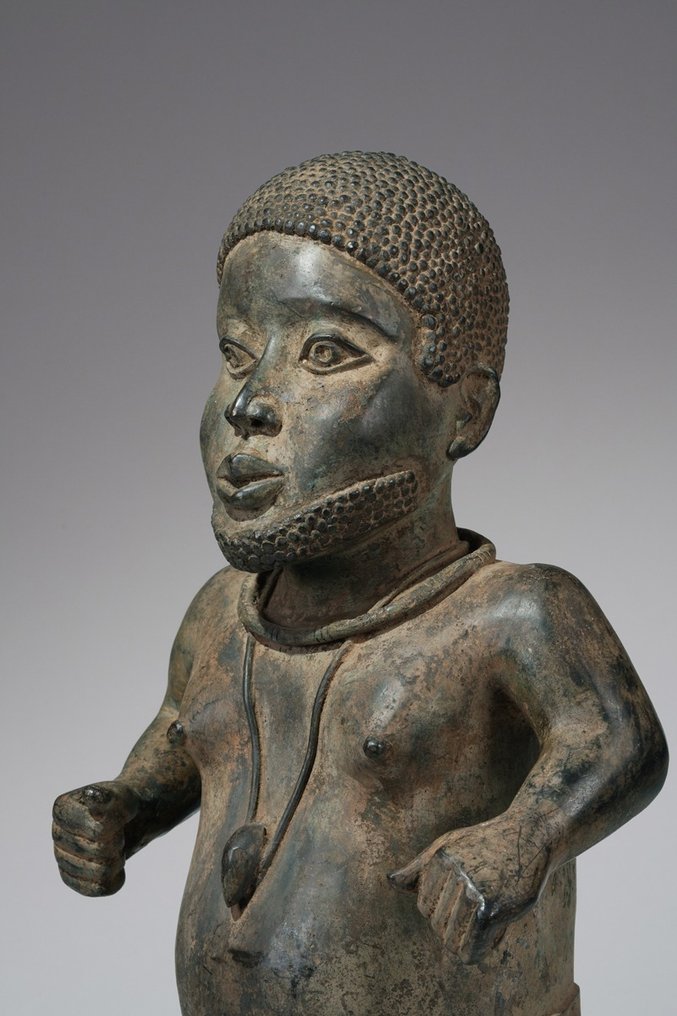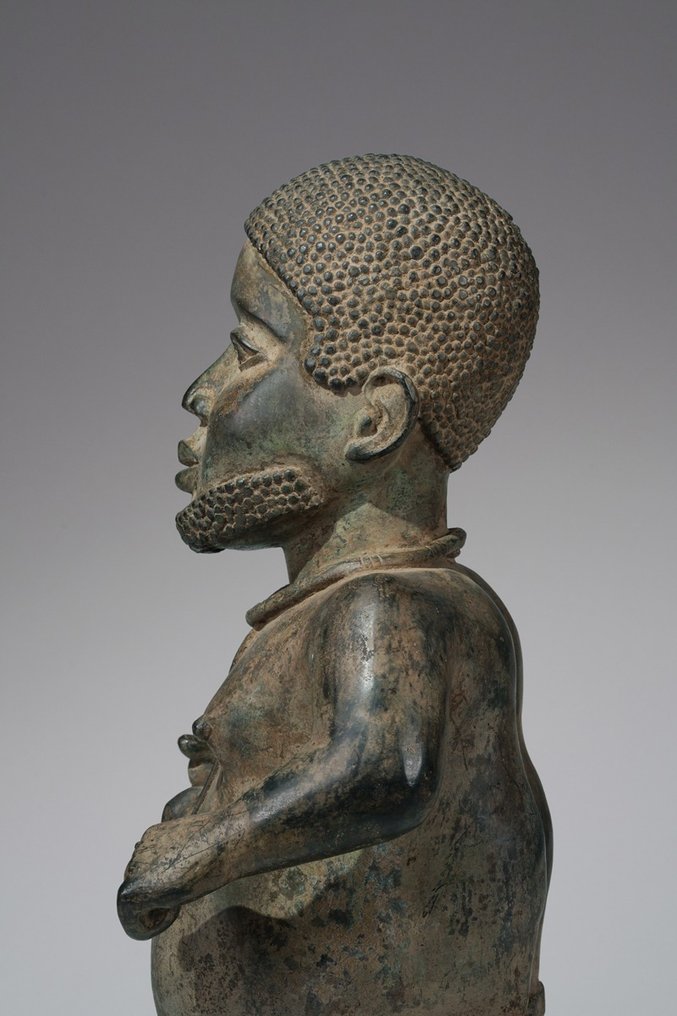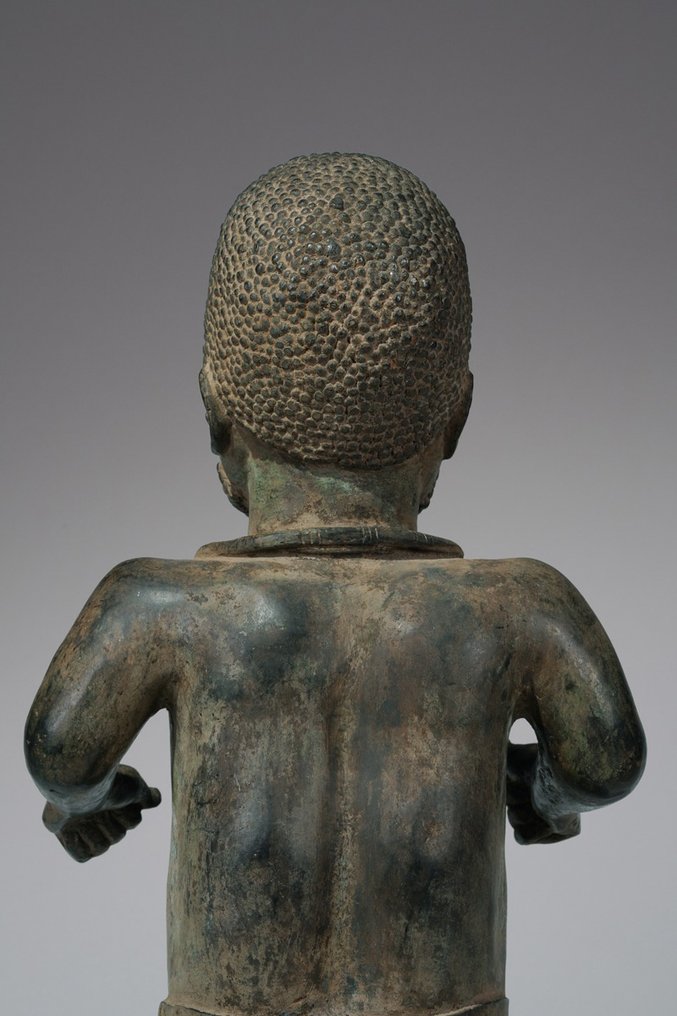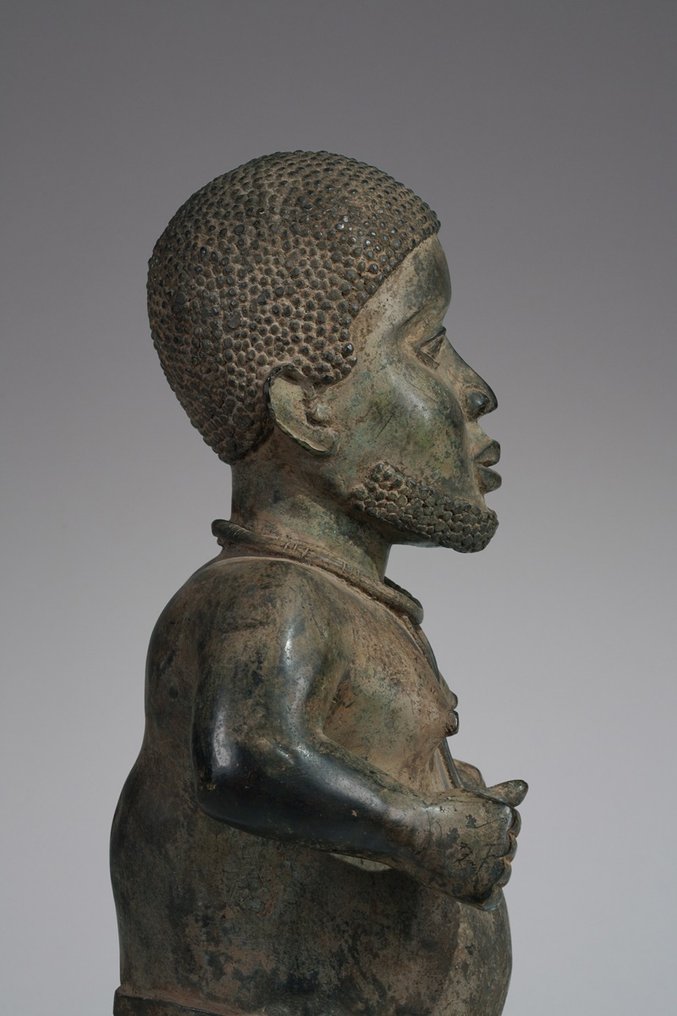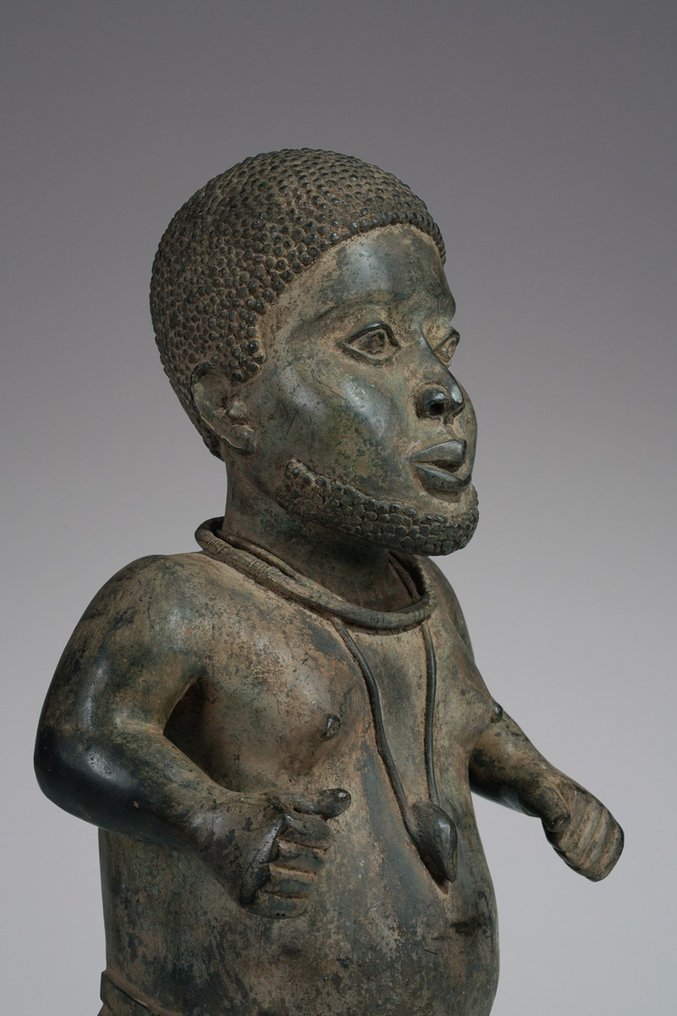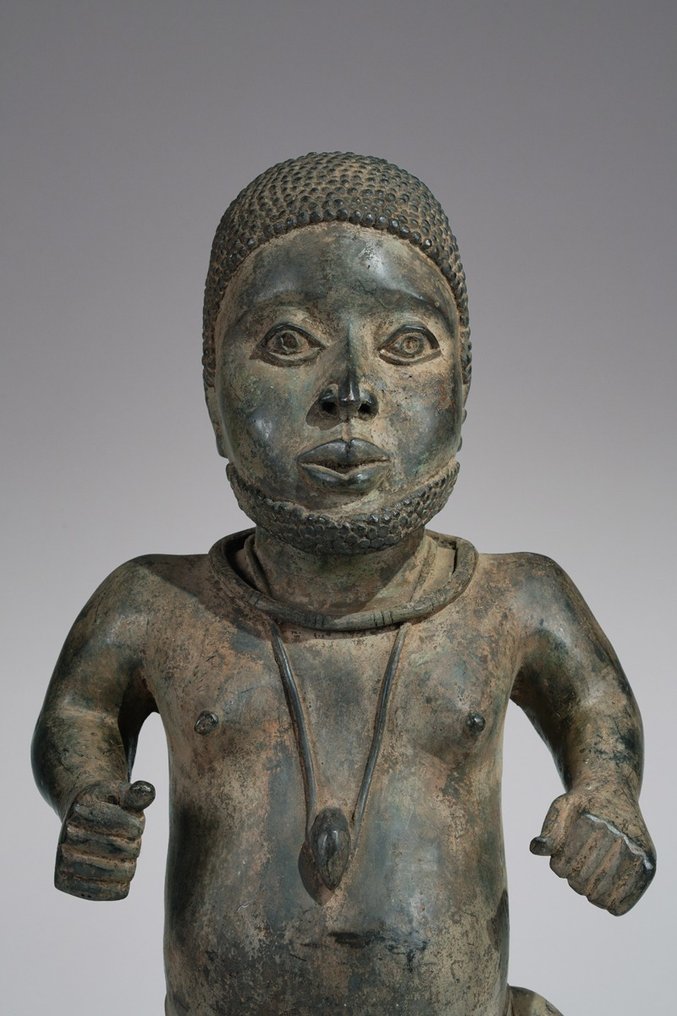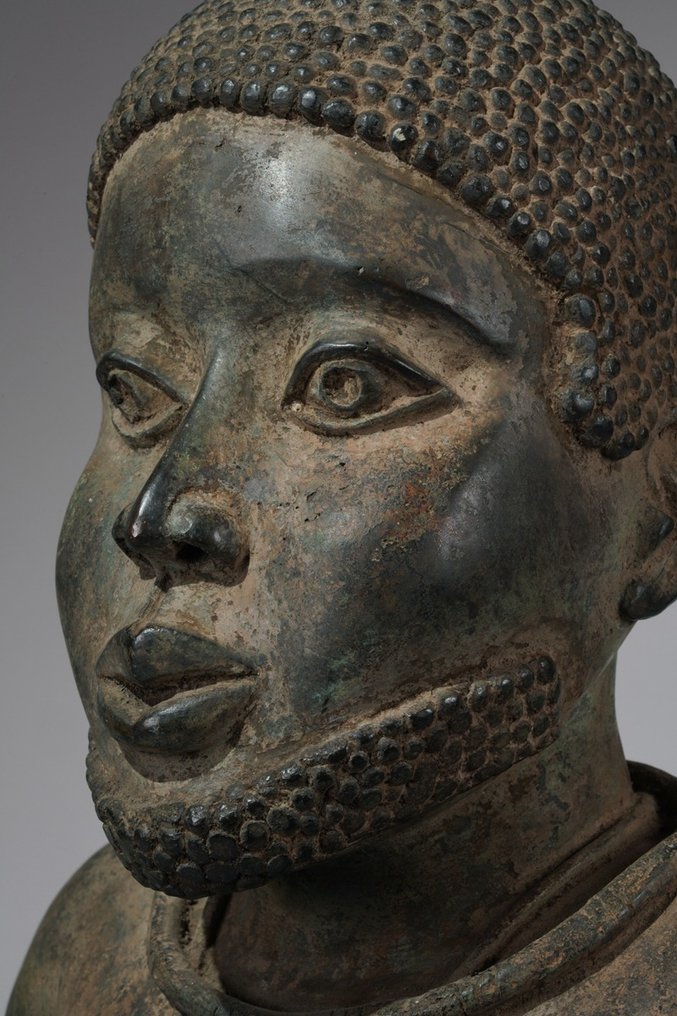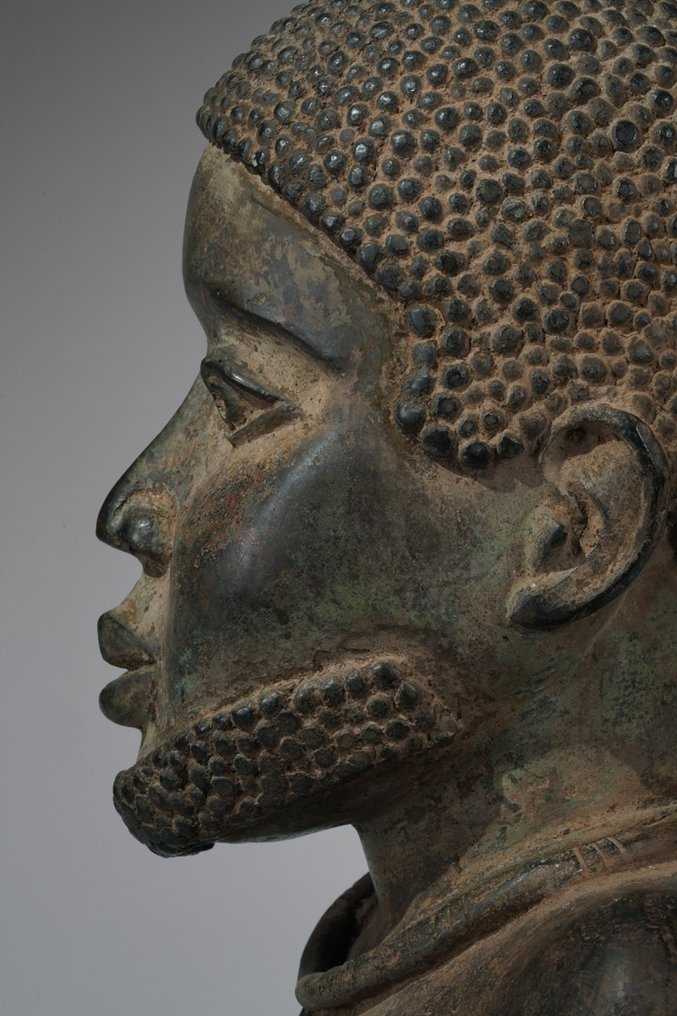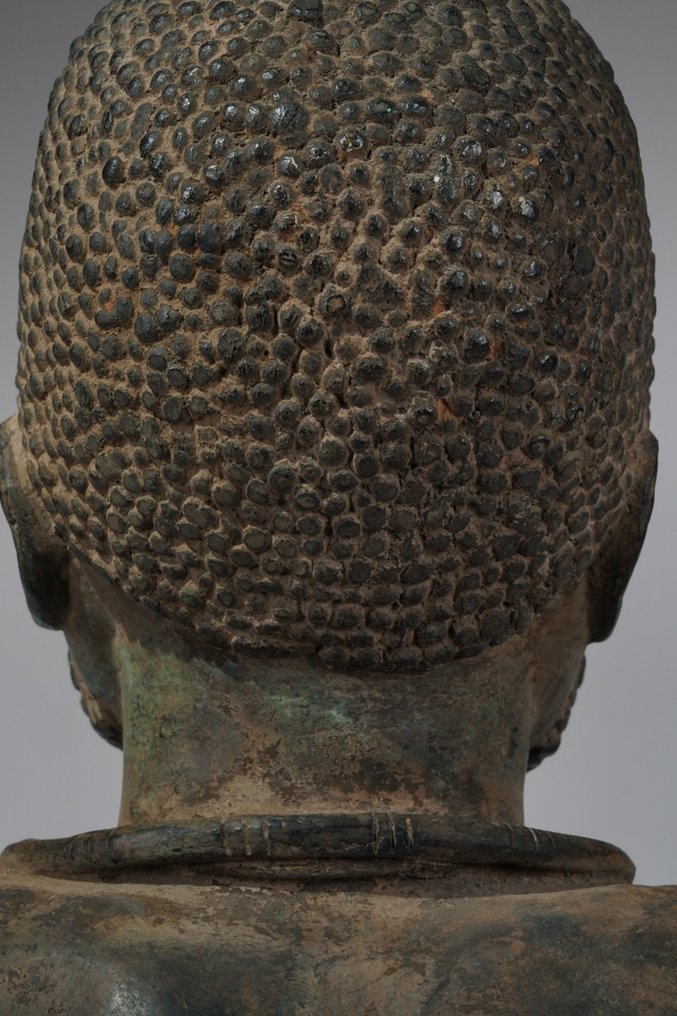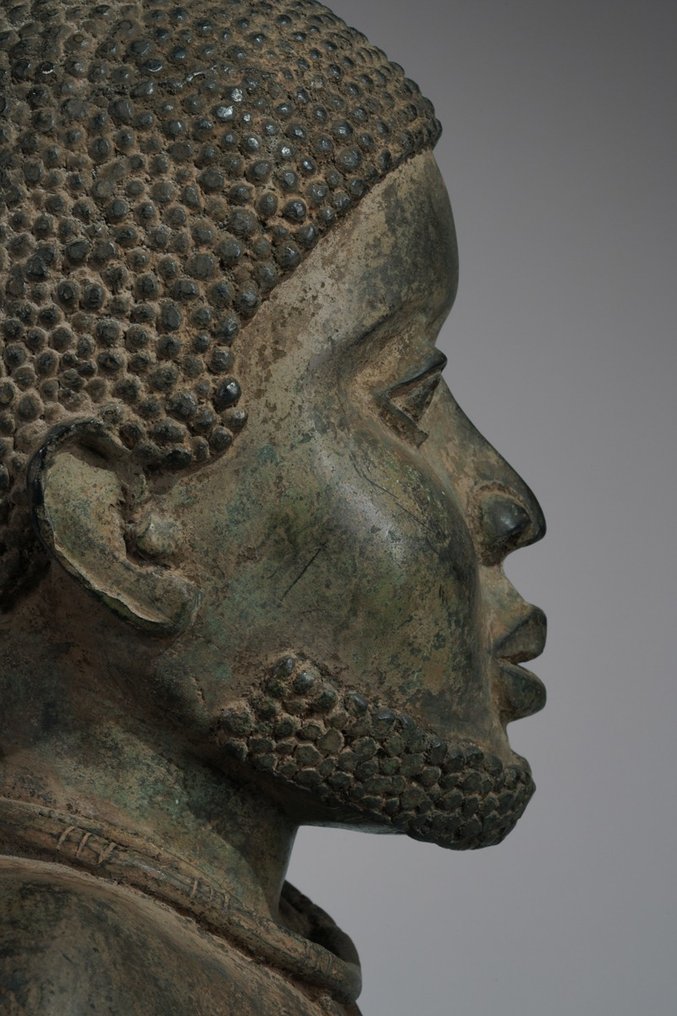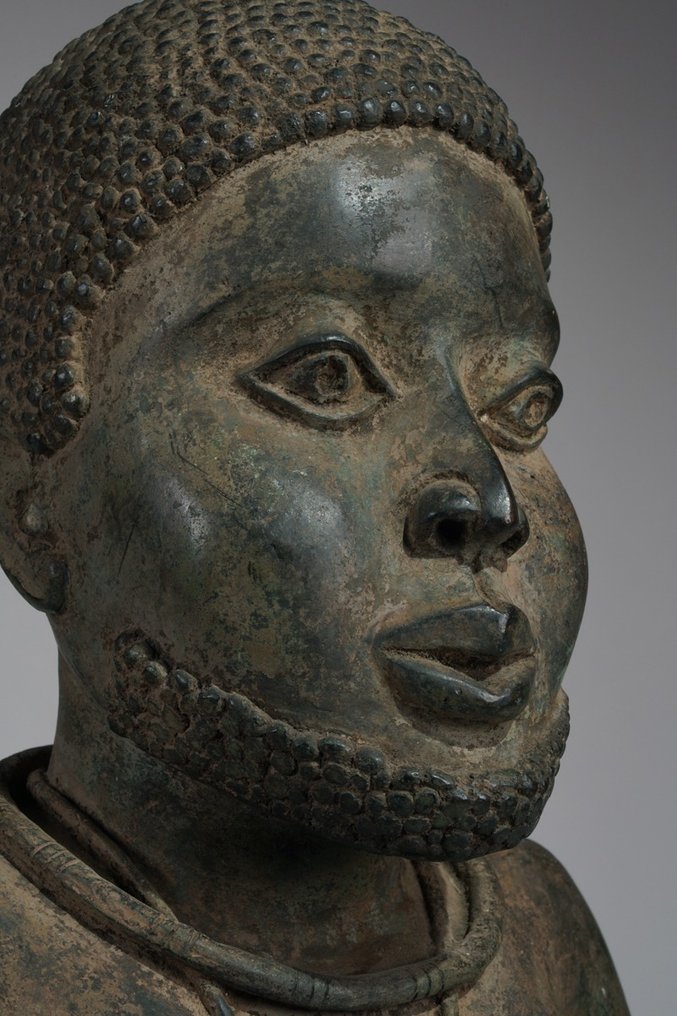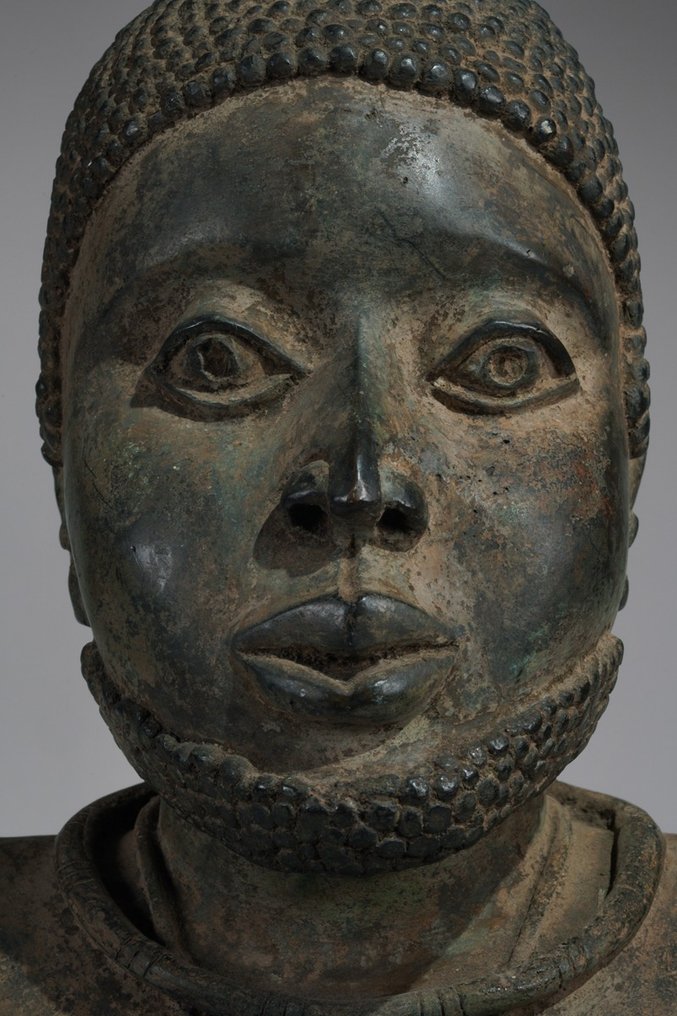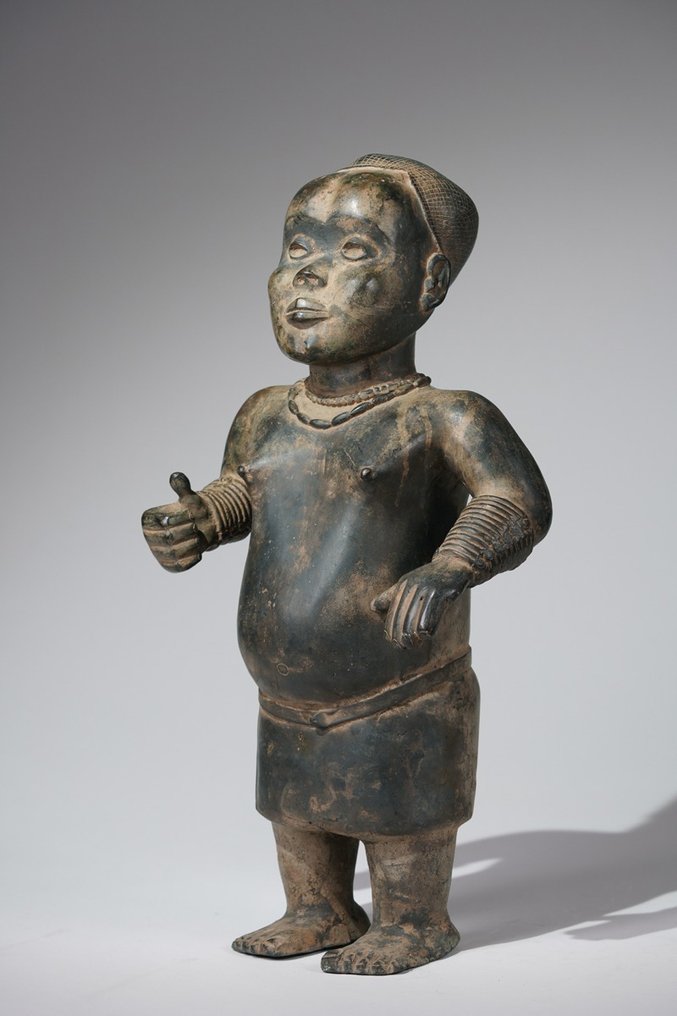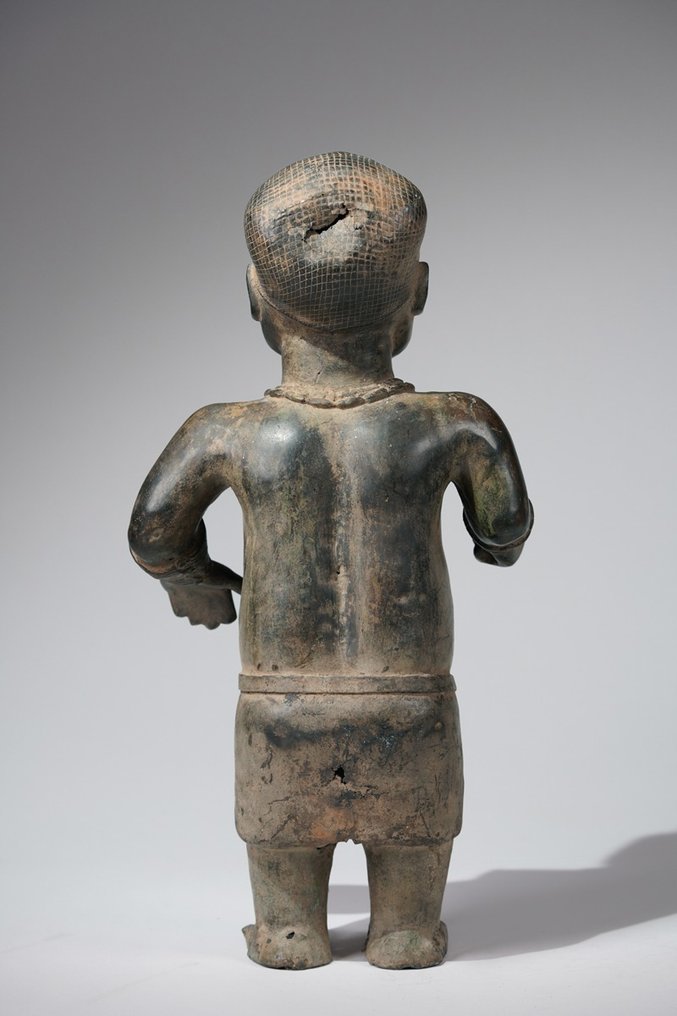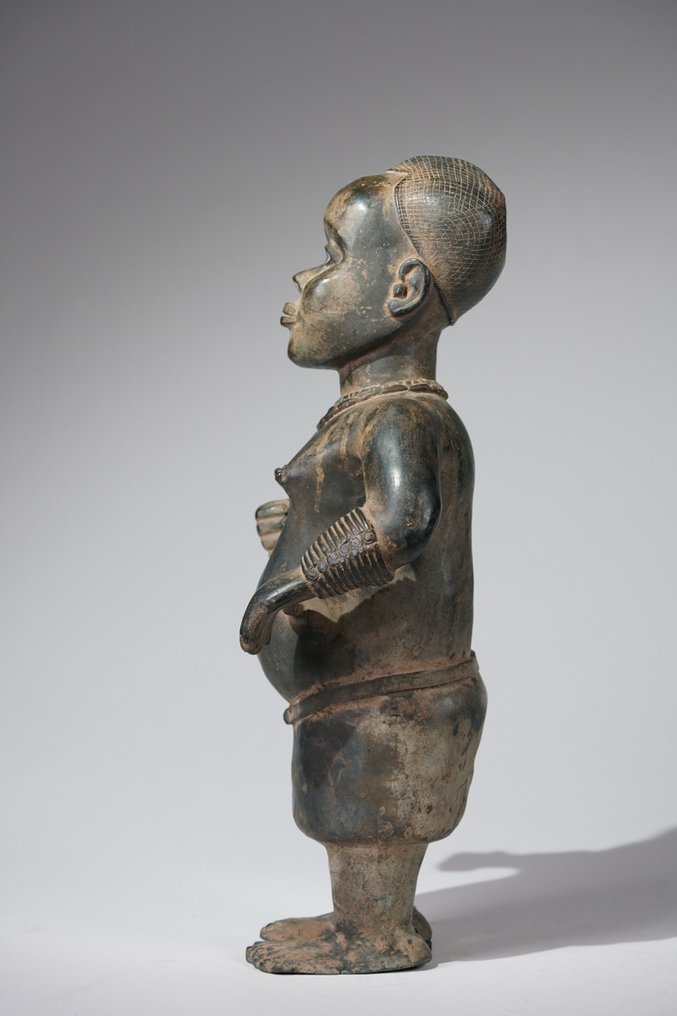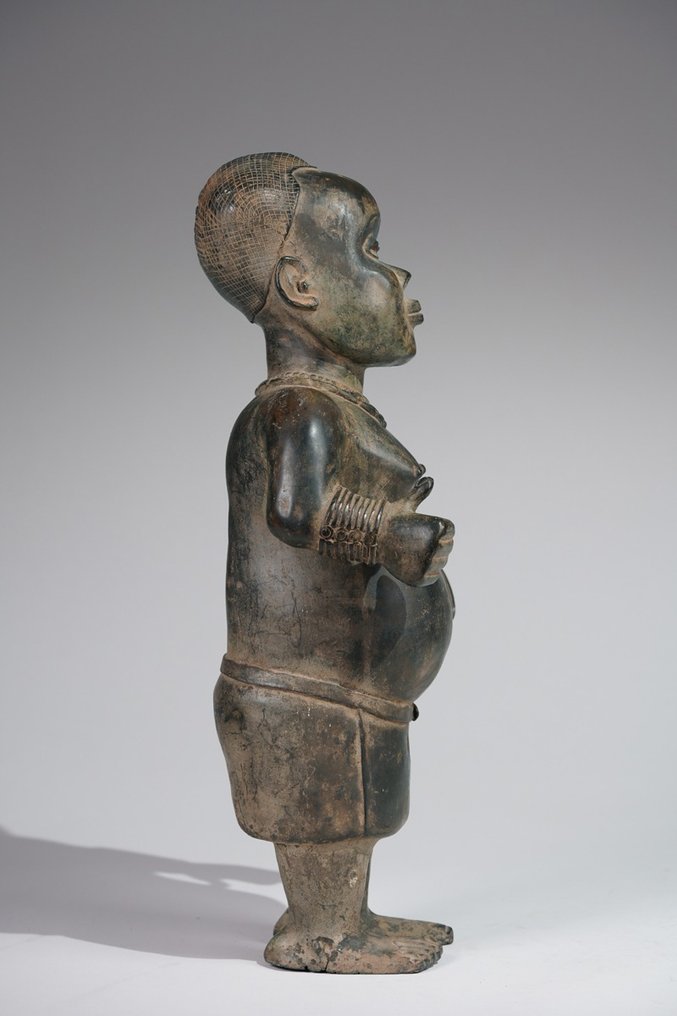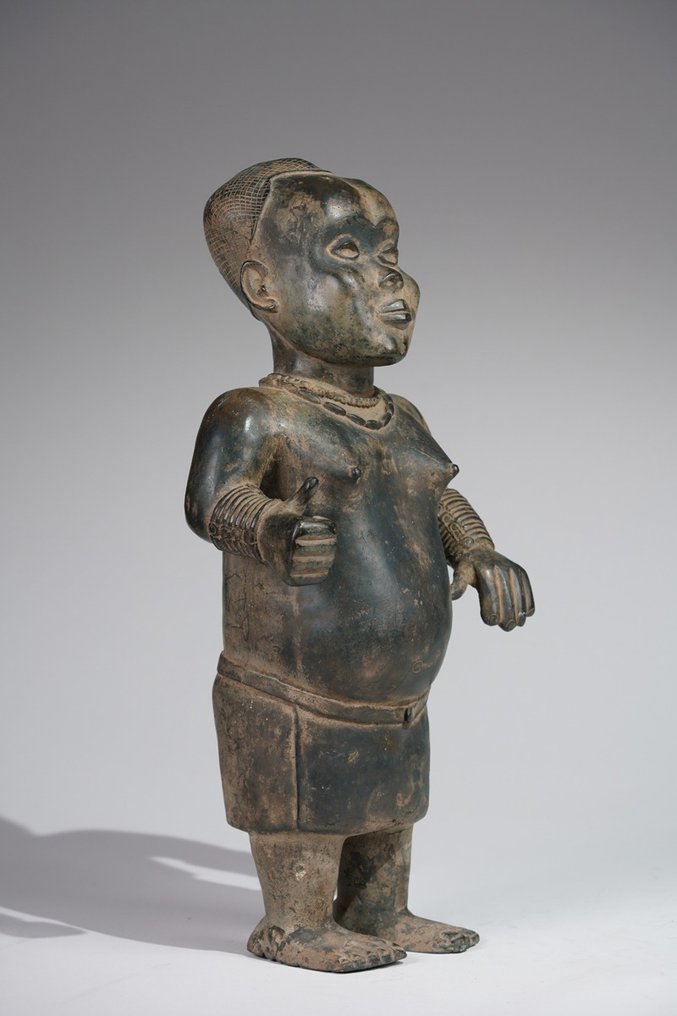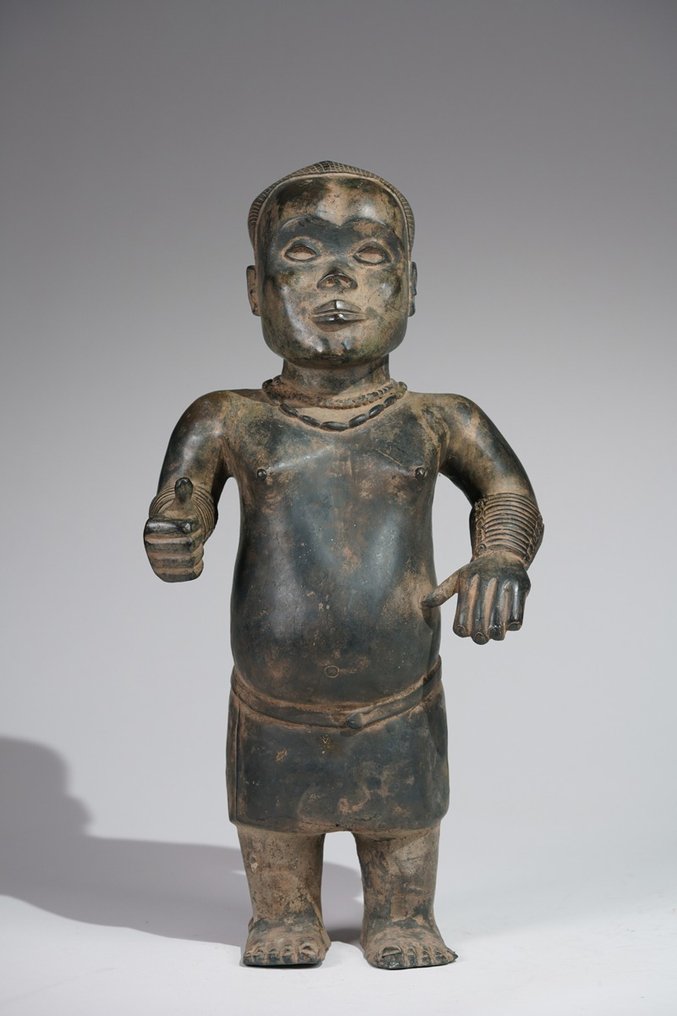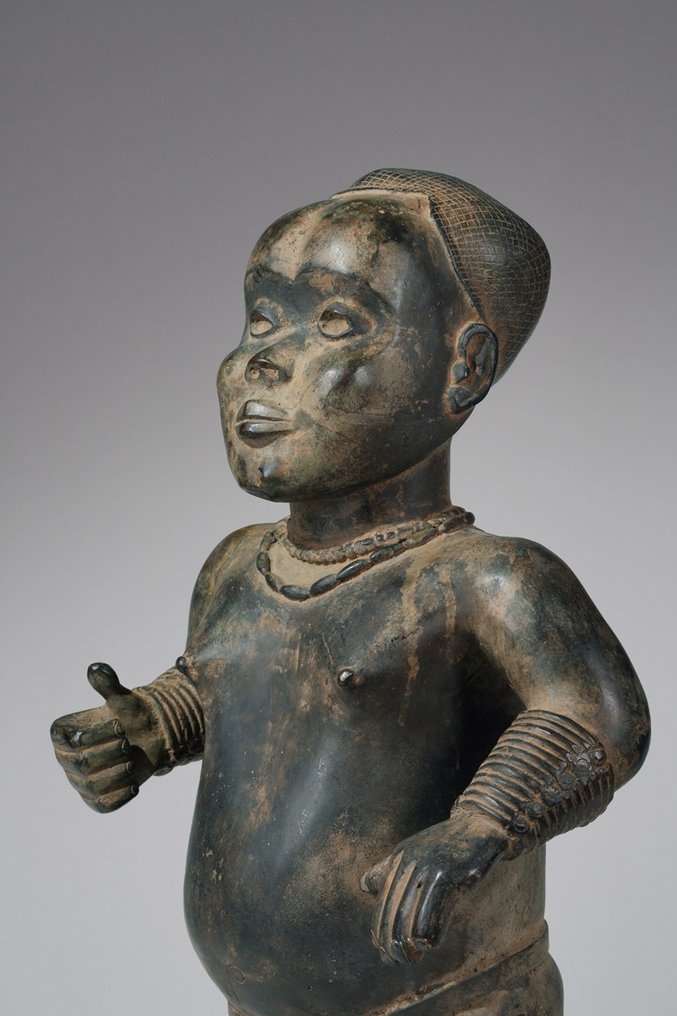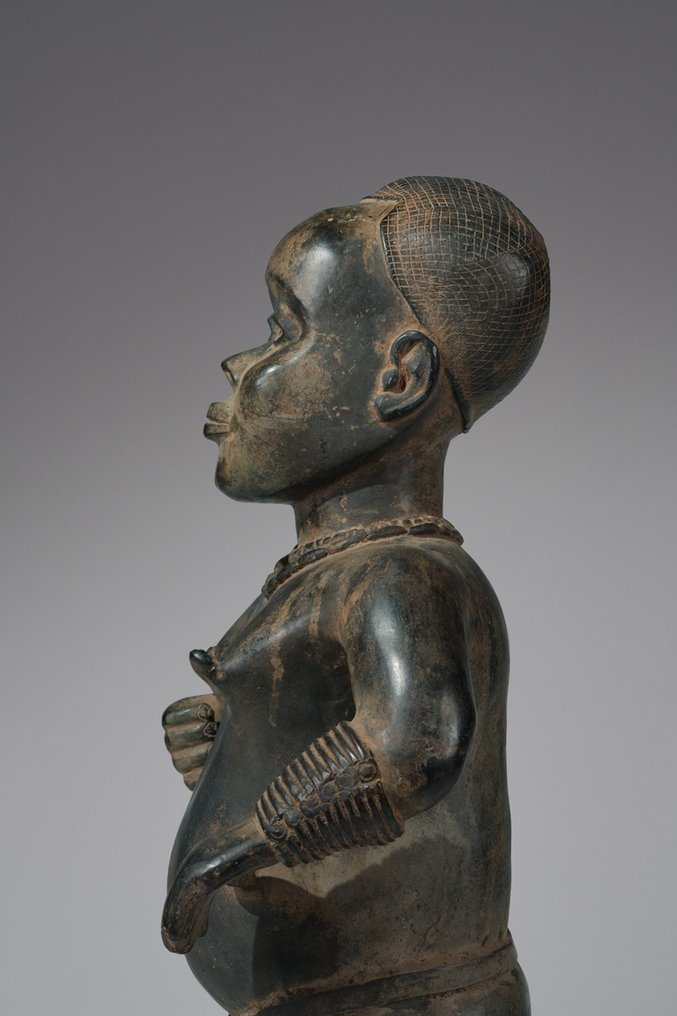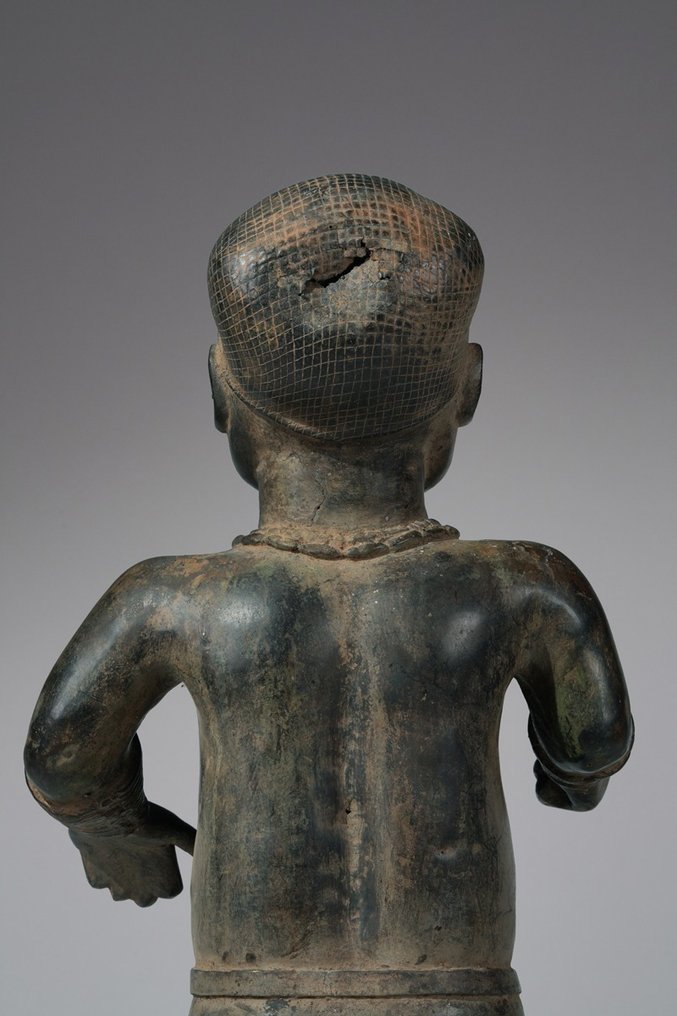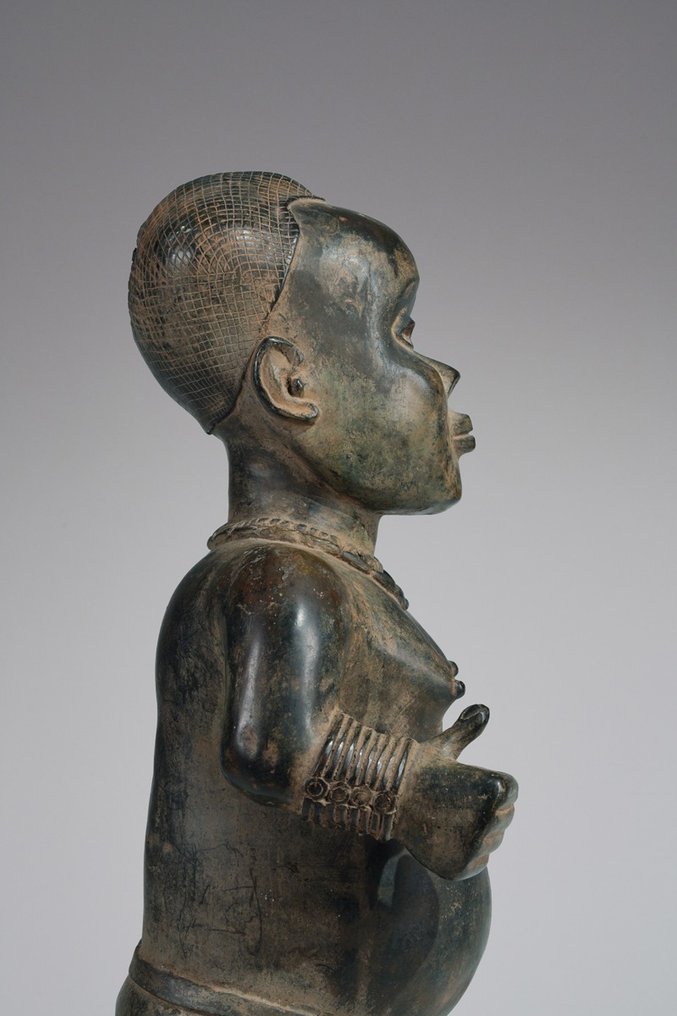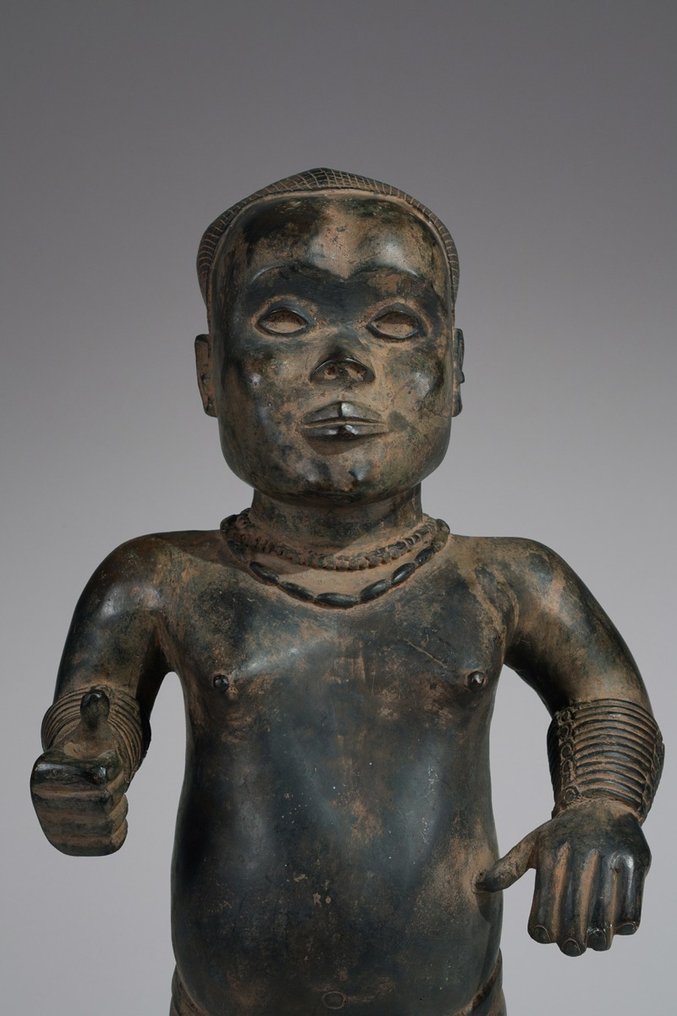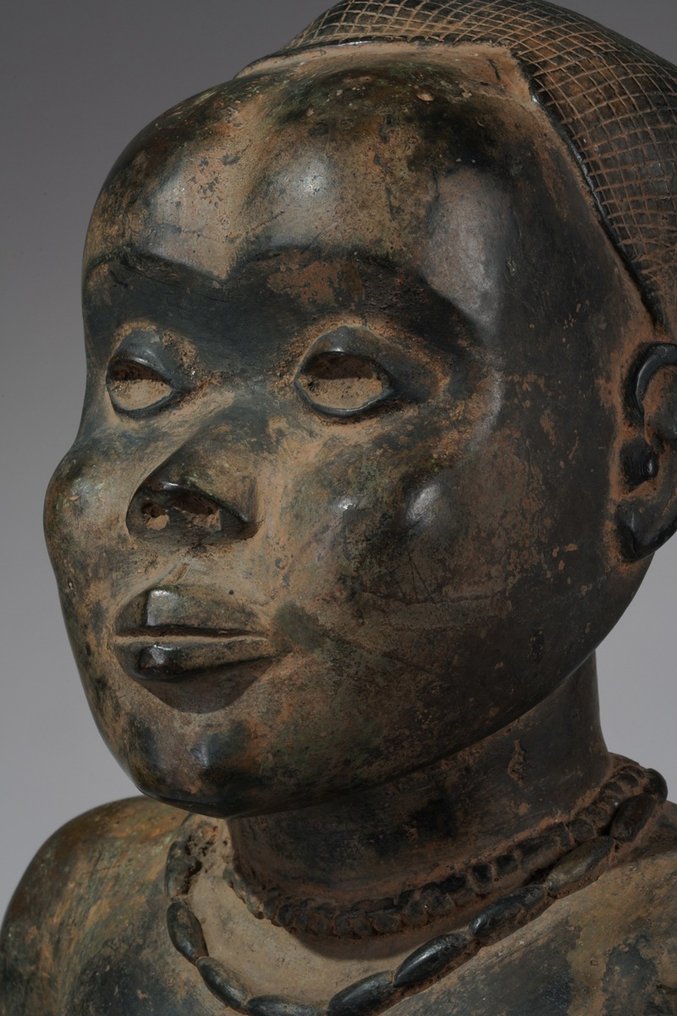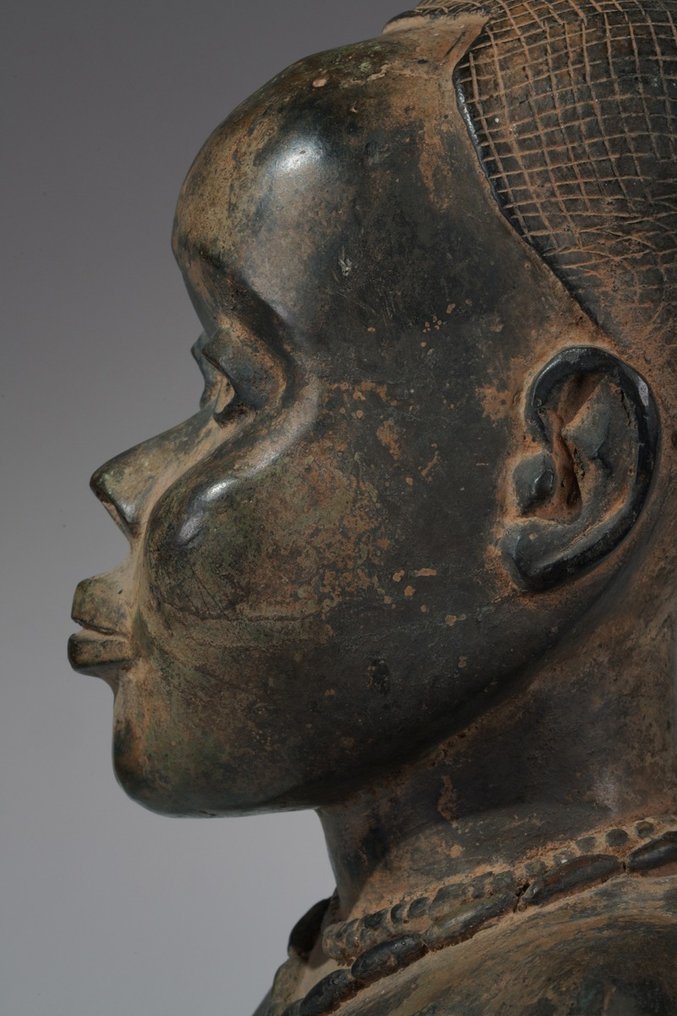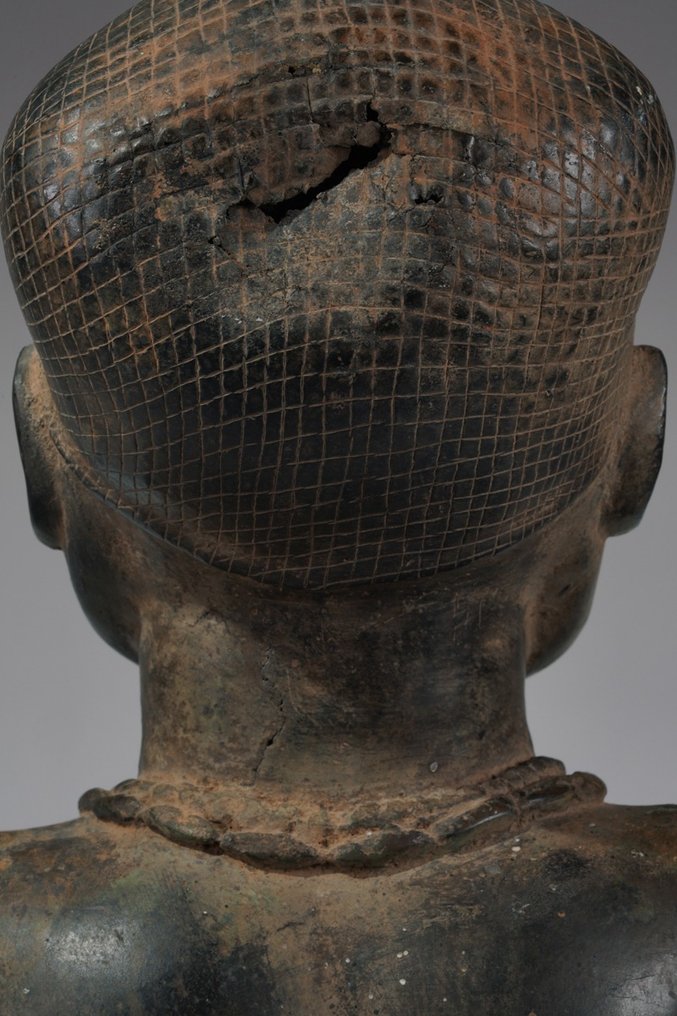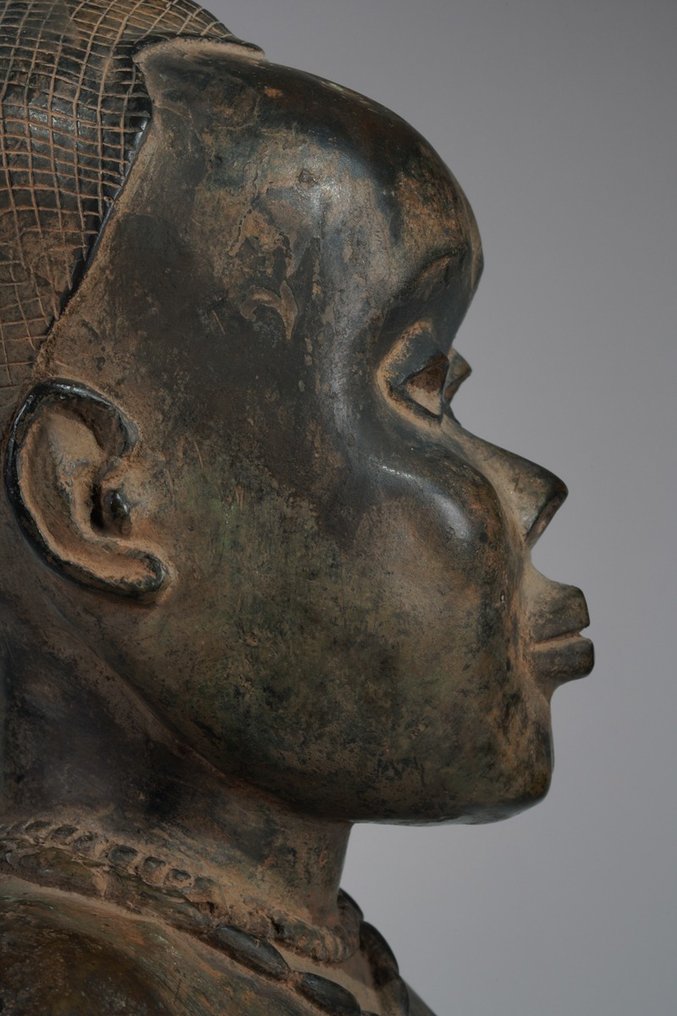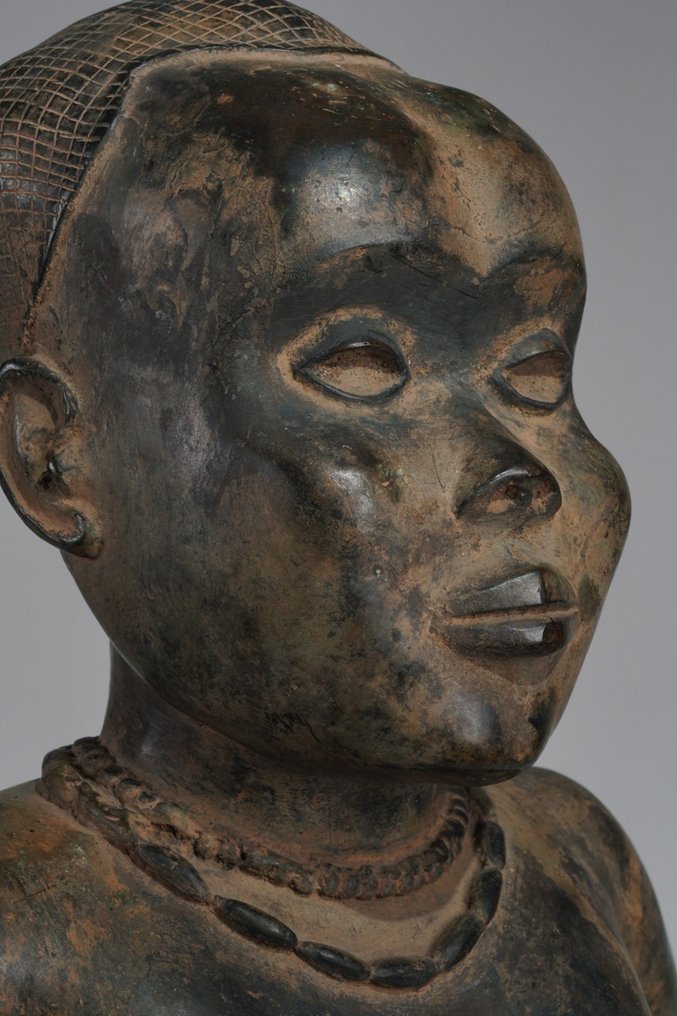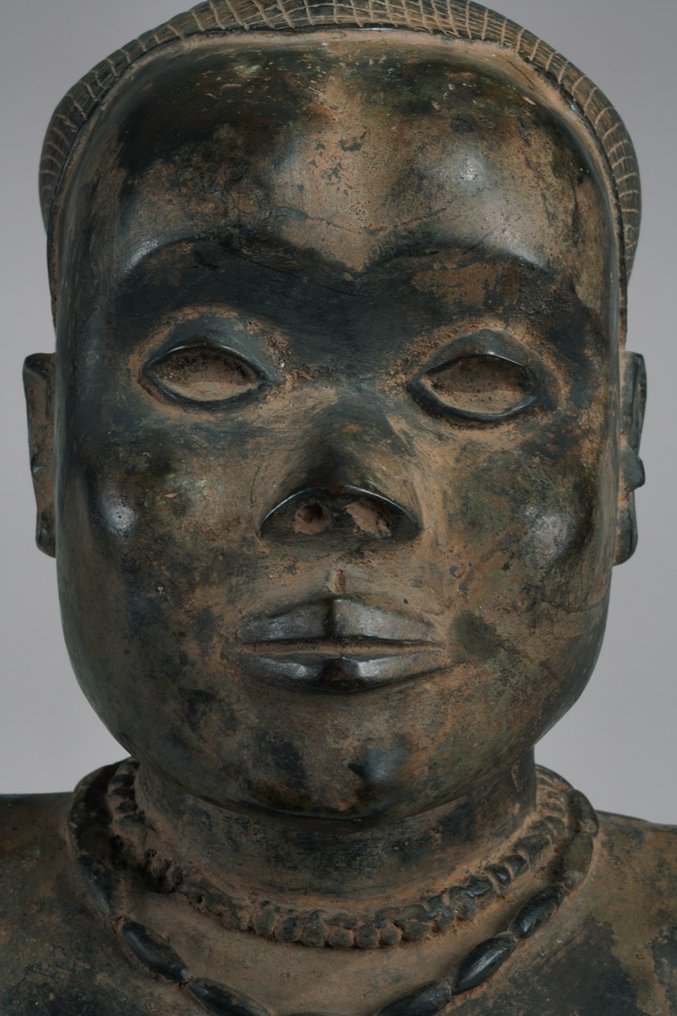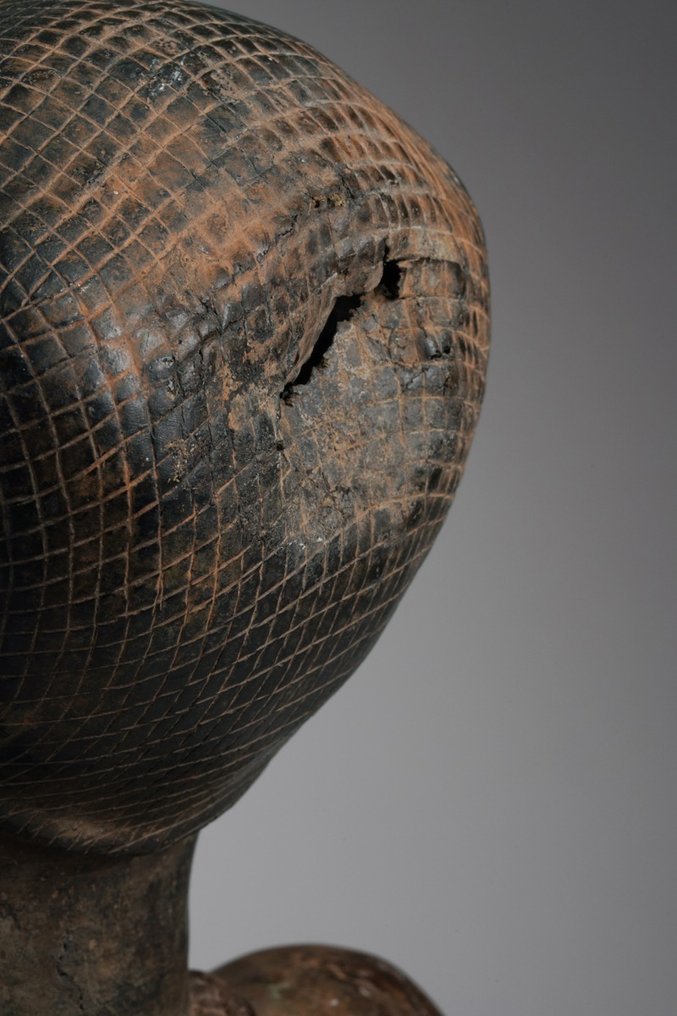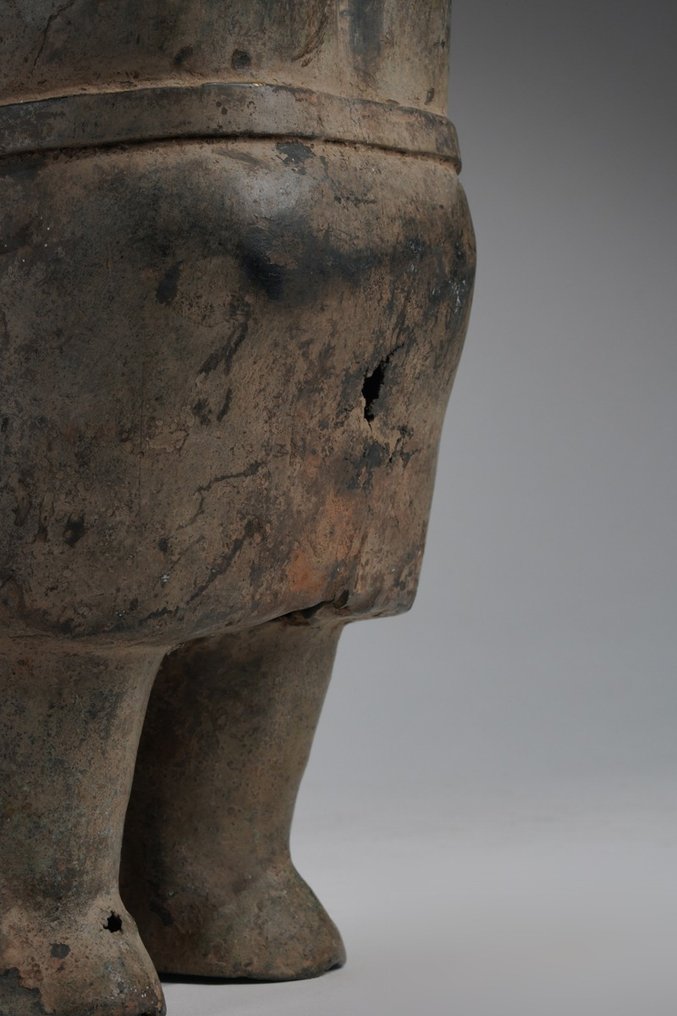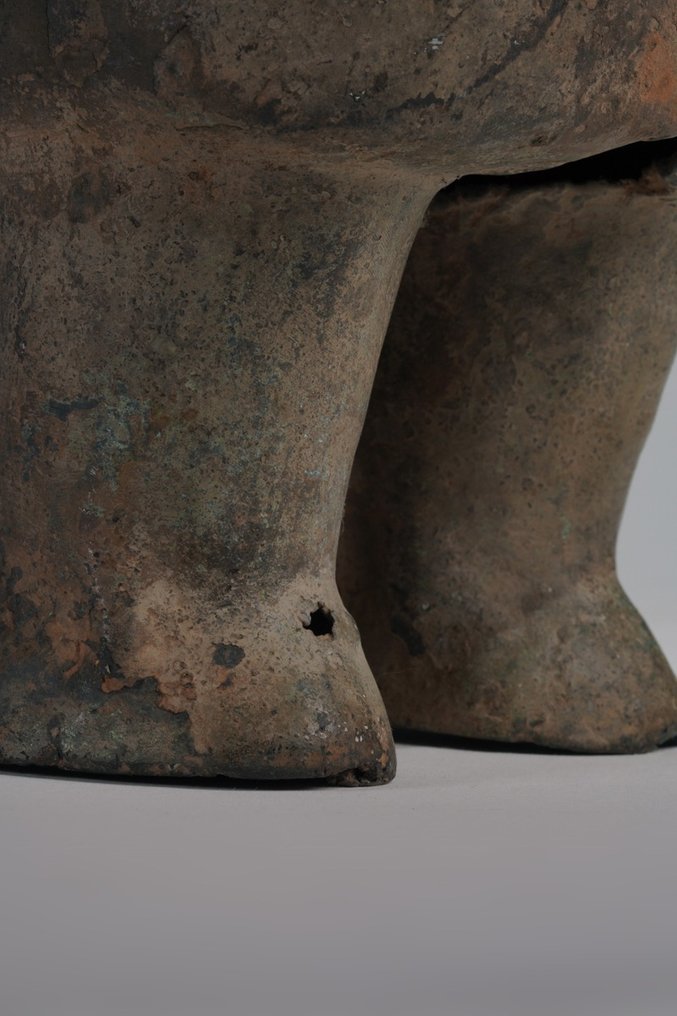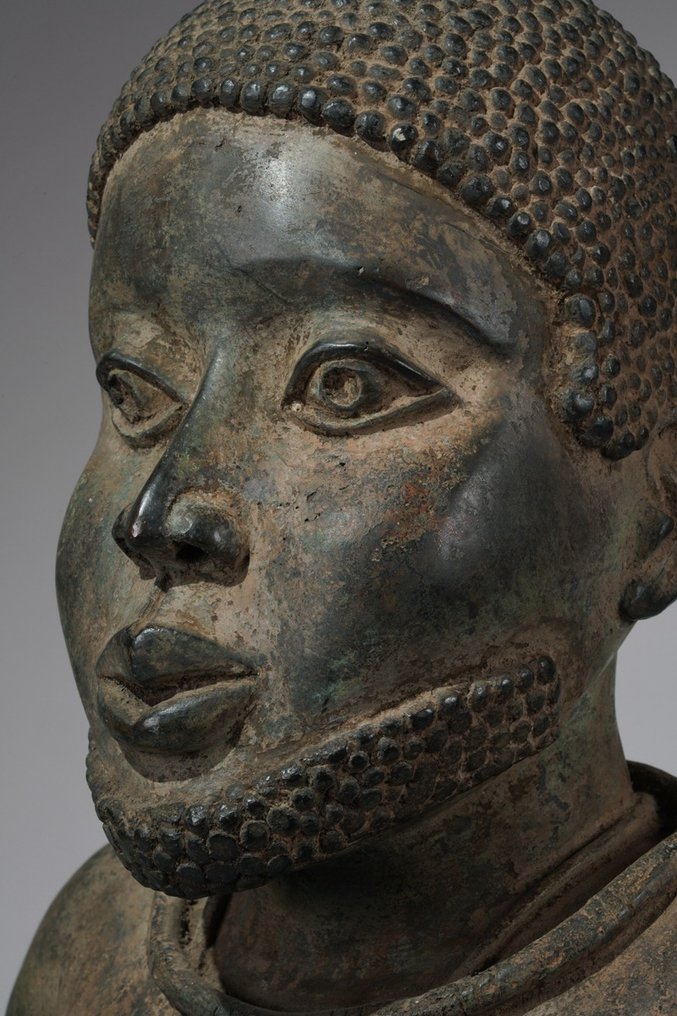wolfgang-jaenicke
Two Esieku Figures
Two Esieku Figures
Couldn't load pickup availability
Two Esieku Figures, normally depicted as a couple, in the style of Benin. In Benin, physical deformities were traditionally associated with certain functions in the palace. Dwarfism fits the position of court jesters perfectly because it was considered amusing in itself, as it was in European courts.
They are also referred to as Akaeronmwon, which indicates their function as collectors of news for the Oba. Despite their direct relationship with the Oba, they did not have the rank of nobles and were valued for their relationship with the underworld, witches and other spirit beings. Whether these bronzes stood on altars is uncertain and is a matter of conjecture.
The dwarves are in relatively good condition. Some holes, which are probably caused by corrosion, and a large dent on the back of the head of one of the dwarves are documented by corresponding photos; photo wj (last photo sequence).
What is particularly striking is the extremely naturalistic style of representation, which is particularly evident in their facial features. Felix von Luschan famously said that the Benin bronzes were in no way inferior to the work of Benvenuto Celli and were artistically on the same level. But when this bronze was cast, Cellini was not even alive. In the meantime, examples have emerged that are said to be almost 700 years old. This means that we are not in the sixteenth century (Cellini was born in 1500 and died in 1571) but in the last quarter of the fourteenth century. A portrait like this was created in Africa around 1370. Almost 200 years earlier. Luschan's enthusiasm would have been long before the time of Cellini, the immediate successor to Giotto, if Luschan had known about these sculptures, which are more likely to be attributed to the Ife style than the Benin style, and their great age. Nor was it a "religious motif", but rather we see the portrait of a bearded young man whose small stature would have given little cause for idealisation or religious exaltation. It is a realism that can hardly be surpassed in objectivity and was only expressed much later by Dürer or Leonardo. It all sounds a bit "superlative". But on closer inspection I cannot come to a different conclusion: this is a sculptural masterpiece, long before Cellini thought of casting the magnificent doors of the Baptistery in Florence.
However, when von Luschan described the "Wiener Zwerge", aaO. S. 299/ 300.his interest was primarily in the medical analysis of the visible deformations, and the art-historical enthusiasm for the Benin bronzes, which Luschan himself had and which he shared with his Viennese colleague von Heger, took a back seat. This may be the reason why the extraordinary realism, unusual for Benin portraits, which we know in Europe as the Early Renaissance, did not come into his field of vision.
Felix von Luschan: Die Altertümer von Benin, Band 1, Berlin 1919, S. 299/ 300.
Philip J. C. Dark: An introduction to Benin art and technology, Oxford 1973, S. 97.
Paula Girshick Ben-Amos: The art of Benin, London 1995, S. 43.
Barbara Plankensteiner( Editor): Benin. Könige und Rituale. Höfische Kunst aus Nigeria, Wien 2007, S. 308 - 311.
Height: 62 cm / 61 cm
Weight: 10 kg / 11,33 kg
